-
Posts
617 -
Joined
-
Last visited
-
Days Won
31
Posts posted by Petike the Taffer
-
-
- Popular Post
- Popular Post
I wrote earlier that I owe this masterpiece a review, so... Here is my detailed review of this groundbreaking and seminal Mission Fan.
SPOILERS ABOUND ! TDM PLAYER BEWARE, YOU'RE IN FOR SPOILERS AND MAYBE EVEN A SCARE !This mission... subverted my expectations.
Starting with the briefing video. Not since the days of Sergio Leone's Spaghetti Westerns have I seen such daring subversion right at the start. You're expecting one thing... then, bam !
I tried everything to infiltrate the mansion from the outside ! No luck ! Well and truly, expectations subverted !
NPC dialogue heard from the inside... stellar ! Brought a tear to my eye. Or was it just one of the raindrops that fell on my head ?
What else brought a tear to my eye ? The senselessly slaughtered guard at the courtyard ! Clearly, a cautionary story that he who grabs a sword... and yet, forgets to dim his lantern, the fool... shall die by someone's sword or arrow. Figures !
That you hid the masterful sidequest of collecting the pennies-for-a-thought from the rather racy fountain, in order to later thoughtfully redistribute them to the poor and hungry street urchins of Bridgeport, is nothing short of design brilliance worthy of at least a two hours long, detailed GDC lecture. I'd watch such a lecture on a loop, 24 hours a day, twelve times a day. Brilliant stuff !
Ah, the side-yard, with steps and a basement entrance that looked and felt straight out of Thief II's opening mission, Running Interference... Could the cunning TDM homages to the classics get any better ?! Could they ? Well, soon enough, I discovered that, yes, they could get even better ! There was an even more amazing homage that I didn't expect ! Read on to find out what...
The chefpick was... indescribably cool. I now yearn for it to be included in every single FM. The classic lockpicks feel completely passé.
I knocked out both NPCs and... what is this unexpected social commentary ?! The knocked-out have names ?! I applaud your deeply incisive observation, worthy of a skilled chef with a kitchen knife, that the NPCs in games are not mere fictional constructs, but fictional beings with names, hearts and souls ! I confess, upon this moving revelation, I started shedding tears so uncontrollably, I nearly had to quit playing the mission. Yet, I pressed on, heartened and refreshed by such displays of humanity in a work of stealthy interactive fiction ! The commentary was no less subtle and stealthy, I tell you ! As subtle as the protagonist's gritty, grounded accent !
Two different entrances into the local vent system... I... I can't even... So many possible routes of entry. Truly, in the grand tradition of the TDM immersive sim design philosophy !
The choice of giving the intrepid protagonist a temporary rat companion, bribable by cheese, who fetches priceless hidden loot, was equal parts innovative and a hard-hitting social commentary on the abuse of animals for theft and burglary, and people "ratting out" their fellow tenants by revealing the hiding places of their priceless belongings ! I was deeply impressed ! I was thoroughly amazed ! You even had my 'stalgia sense tingling ! Why ? That minor element of your FM even reminded me of the old but gold Thief II FM campaign The Flying Age: The Abominable Flying Machines of Dr. Zeppelinger, where you escape a prison cell by giving a mouse a bit of cheese you've managed to find, and the mouse then provides you with a means of escape.I have scarcely ever seen such a wonderful duo of homages to other past LGS missions and fan missions !
Of course, the shocking revelation with the undead in the freezer was an even more biting commentary on the undead precariat of today, and their ruthless and dehumanizing exploitation by The Man, maaan, the snobby culinary establishment. Undeadkind merely want to roam their abandoned tombs and catacombs in peace (pieces ?) and get a bite or two out of a stray vagrant or drunk guard every now and then, no big deal. Society needs to be more charitable to undeadkind !


And you've even included a gas arrow up in the rafters ! You well and truly know your audience, as I'm an old, die-hard gas arrow collecting enthusiast. I am a sophisticated, yet simple man: I see a gas arrow in Thief or The Dark Mod, I immediately grab it, owing to its rarity. Thank you for such generous mission design.

To cut a long story short, I have had a thorough, engrossing and moving cultural experience with this short-but-dazzling mission !
In the shadowed alleys of TDM fan mission sites, I have crossed paths with missions that were ruthlessly difficult and confounding, yet rewarding, but never have I played a mission this... authentic... avantgarde... thought-provoking... It even made me feel hungry !
Riveting, simply riveting. Like working on the skeleton of a 1930s Art Deco skyscraper.

Ultimate verdict: 22 frommages out of 20, with a happy cheese-filled rat as the cherry on the top. (But what kind of frommage ? Cheddar ? Swiss cheese ? Gouda ?! I dunno. Don't have a cheesemaking degree.)
In other words, I cannot rate this mission other than with the Chef Excellence Award for... Excellence !
*chef's kiss*
Le Mission Légendaire Magnifique !
Roll over, Requiem !Roll over, Crucible of Omens !
Roll over, Iris !
This, this... is the pinnacle TDM fan mission of all time.


-
 1
1
-
 5
5
-
On 4/1/2024 at 11:48 AM, Goldwell said:
Argh, sacrebleu ! Mon ami, I owe it to myself to try zis mazterpiece, hon, hon. Very... avantgarde !
Will provide feedback later.
-
 1
1
-
 2
2
-
-
2 hours ago, SeriousToni said:
Thanks a lot for your work on updating this.
I've also added new links to royalty-free music in my other external music database thread.

I've covered the historical music fairly in-depth, but the royalty-free tracks were lacking in numbers, so I searched around for some interesting ones. There's more to come in that other thread in particular.-
 2
2
-
-
17 minutes ago, thebigh said:
Maybe a dumb question and ugly hack. But could you create an invisible, nonsolid, and inert AI, continually update its position to be on top of the player, and then have the "follower" AI follow this dummy?
I've seen fun workarounds like that in other game modding as well.

Years ago, maybe even a decade, some fella who was making a mod for Mount & Blade over at the Taleworlds forums revealed that he put invisible human NPCs on the backs of regular horse NPCs, then put the horse NPCs inside a horse corral he built for one of his mod's locations/scenes and then did some minor scripting, so the horses with invisible riders would wander around the corral. The end result was that it looked they're doing this of their own will, rather than an NPC rider being scripted to ride around the corral slowly. Necessity is the mother of invention. I don't know about the newest Mount & Blade game, but the first generation ones (2008-2022) apparently had some sort of hardcoded issue back in the earlier years, where if you left a horse NPC without a rider in its saddle, the horses would just stand around and wait and you couldn't get them to move around.
I don't know about the newest Mount & Blade game, but the first generation ones (2008-2022) apparently had some sort of hardcoded issue back in the earlier years, where if you left a horse NPC without a rider in its saddle, the horses would just stand around and wait and you couldn't get them to move around.  Placing an invisible rider in their saddles suddenly made it viable again, at least for background scenes, of riderless horses wandering around, for added atmosphere. First generation M&B presumed you'd mostly be seeing horses in movement with riders, and the only horses-wandering-loosely animations and scripting were done for situations when the rider was knocked off their horse or dismounted in the middle of a battle. Hence the really odd workarounds.
Placing an invisible rider in their saddles suddenly made it viable again, at least for background scenes, of riderless horses wandering around, for added atmosphere. First generation M&B presumed you'd mostly be seeing horses in movement with riders, and the only horses-wandering-loosely animations and scripting were done for situations when the rider was knocked off their horse or dismounted in the middle of a battle. Hence the really odd workarounds.  So, an invisible NPC trick might not be out of the question in TDM, even though you could probably still bump into it, despite its invisibility.
So, an invisible NPC trick might not be out of the question in TDM, even though you could probably still bump into it, despite its invisibility.
-
44 minutes ago, grodenglaive said:
btw, the path node "path_follow_actor" is supposed to do just that, but it doesn't work (at least in TDM 2.11).
That's the exact one I meant. I've tried it in my FM (a wait node converted into a follow node), but it doesn't seem to work once the character reaches the spot where it's supposed to trigger. The character just stands and waits in place, as usual or as with the wait node. Well, I don't really need a follow node in the FM I'm currently making, so I'll still have plenty of time to wait until a fully functional follow node becomes available.
 (There's also some potential path node workarounds if it doesn't get resolved, anyway.)
3 minutes ago, Amadeus said:
(There's also some potential path node workarounds if it doesn't get resolved, anyway.)
3 minutes ago, Amadeus said:this sounds like something that'll need a custom def. I know you can bind lights to the player and a few other things; I feel like this should work too, but experimentation will be needed. If I have time today or tomorrow I might look into it
Thanks, Amadeus.

Interesting. The FM I might make in the future that might need the follow type node is still really far away, so it's unimportant now.-
 1
1
-
-
On 4/2/2024 at 6:46 PM, joebarnin said:
You don't connect the path_ nodes to an AI - you connect the AI to the path_ nodes. So Ctrl+k points the AI to its starting node. That node should point to one or more other nodes, and so on. So basically: 1) define a path or paths by connecting several path_ nodes. 2) tell the AI to start along this path by targeting one of the nodes.
That's the basics. It can get more complicated with scripting and/or triggers, etc.
I plan to gradually try out all or most of the different path node types and adjust them depending on the interaction.
Though I don't plan to use it in this particular mission, I have a keen interest in the follow type, as I'll want an NPC to follow the player character in another, future FM I'd like to create. Never too soon to try out various functions while I'm already learning new FM-building skins after a long hiatus.
21 hours ago, Frost_Salamander said:If you can do this, I don't know how. But it's something I want as well and was actually going to raise it as a feature request. I think speakers are spherical so they model real sound which radiates from a source outwards.
I find this doesn't work so well with some scenarios though:
- water. For example you want to hear the sound of waves lapping a shoreline or a running water sound for a stream, river or canal. If the shoreline or stream is on the longer side, you have to have a speaker with a huge radius to cover it and the sounds extends too far along perpendicular to the body of water. Or alternatively multiple speakers but then you have to manage overlap and it becomes a pain.
- wind. Same idea but vertical - if you have a long edge or balcony then you need a large radius speaker to cover it and it might extend too low so you hear wind noises on the ground.
@Petike the Taffer If all you want is for a sound to fill a room, just use the location system ambients instead. But you can only have one sound I think, so you couldn't have say your ambient music and also a weather sound at the same time without using a speaker for one of them.
Thank you for the suggestion.

I completely forgot about the location system ambients as an option !
A few years back, when I was testing various stuff in DR, I did actually use that approach instead, once or twice. I haven't used DR much in recent years, so I eventually forgot about setting it up that way.
Acknowledged, and I'll look into it. It'll save a lot of time concerning the audio side of the mission.
My first few missions won't have much a natural environment, they'll largelly be small and focused on buildings or urban spaces, so I won't need to bother with detailed audio for rivers yet. I have an outdoor FM planned for later (it's in the pre-production phase), and I'll have a good reason to study it in greater detail.
5 hours ago, OrbWeaver said:All speakers are defined as spheres, with a customisable inner and outer radius. There is no way to change them into any other shape.
Implementing support for rectangular speakers would need changes to the core game code.
It's actually okay, I don't reallt need rectangular speakers. Given that I've been reminded I can set a main ambience for each room - something I did know before, but forgot, after not working properly with DR these past few years - I'll do just that, and use the speakers for more secondary ambience concerns.
5 hours ago, grodenglaive said:handy shortcut!

Handy indeed.
1 hour ago, HMart said:Why do you want a square visualization for sounds? If is because you are afraid, that because of the fact the sound shape goes through walls, in a squared like room, that sound may go as well, then don't be, afaik unless there's zero portals in a scene, sound will be blocked by "walls" automatically. It uses the portals to know where it can "flow" into other rooms.
So only the size not the shape of the visualization, is what matters, like OrbWeaver said, the shape is only a visualization for the inner and outer radius of a sound. In other words the area or "field of influence" of a sound and that "field" afaik, expands equally in a 3D volume, in a sphere like manner (to be more precise two spheres, a smaller inner one and a larger outer one), so a sphere shape, IMO is the best approximation for it.
I also assume, a cube would be misleading because on the current system, if the player parked at the corners of the cube, he/she wouldn't hear the sound, thou I never tested it.
A rectangular shape would be easier to remember.

I'll just use the filters in the editor to put away the speakers if I ever the get the impression they're blocking my view.Also, I don't actually mind the shape all that much. As you and the others say, the size/radius of the speaker is the actual key aspect.
I'm a bit disappointed it's seemingly not possible to resize speakers the same way you can resize brushes or certain models, though you can still tweak the radius numerically, manually. As long as I can work with that, the actual shape of a speaker isn't really important.
My main concern is expanding the minimum and maximum radius areas to an extent where they'll be audible for most for all of the respective areas the player will visit, rather than fading away quickly once the player leaves the hub of the speaker behind. As was already said above, I'll use the different utility to set the main ambient for the individual rooms, rather than a manually placed speaker, and I'll reserve the speakers for additional sound effects or more local ambience. I've already added some extra parameters to the speakers I'm testing out in my FM, so I'll take a look at those soon, though I'll deal with the main room ambience settings first.I'd like to thank everyone for their replies. While I'm not surprised by the answers, I'm now more confident in working with the path node and speaker entities.
On an unrelated sidenote to all of this, the same in-development FM where I'm testing the speaker placement and range was tested yesterday for whether an NPC AI can walk from the ground floor all the way to the topmost floor, without issues. Thankfully, there have been no issues at all, and the test subject - a female mage, whom I won't use in the completed FM, sadly - did a successful first ascent of the tower-like building that'll serve as the main setting. (That's all your getting from me for now, concerning the FM contents.)
-
 1
1
-
I'm updating the external links in my main post. I've added YT links, and I'll also update the website links to the individual tracks.
-
 3
3
-
-
I wonder whether you can resize and reshape a speaker from a spherical shape into a rectangular shape that could fit in a room.
I couldn't find a clear tutorial on resizing the speaker and altering its shape from the default sphere/orb shape. Odd.Maybe it's just a dumb pipe dream by me, but I'd find a rectangular sort of configuration for a speaker much better to work with.
-
Call me foolish, but how exactly do I connect a path_corner, path_wait and other AI path nodes to a particular AI ?
I can't seem to figure out how to assign a particular path node to a particular AI. For example, I have a commoner, want him to walk a few steps to the nearest "wait" node, then do his waiting there for a few seconds, then move onto another path_corner, etc.
I understand you can likely use a particular path node for several characters with a similar or identical route, but I just want to be sure the AI character actually reacts to a path node.
Is the Ctrl + K method sufficient ? -
*TDM or Thief guard grumpy voice*
I knew someone was taffin' around with me the moment I read "he ran away to the woods of northern California".-
 1
1
-
-
As the author of this older thread, is it all right if I revive it ?
I myself have a few questions about narrative structure while making an FM, and I don't want to make a completely new thread. Especially when this thread is still rather short. We don't need ten different threads with the exact same topic.
-
I usually share other people's photos of historical and industrial architecture in this thread, but I've decided to finally share some of my own photos that I've accumulated over the years. Over the years, especially the last twenty or so years, I've wandered many of the old town quarters in cities and towns all around my country, taking snapshots. Wereas many of the main streets and major landmarks have long since had nice and beautiful restoration work done, many of the more obscure side streets, back alleys and occassional overlooked corners had interesting sights to behold. I've particularly been fond of old townhouses that show elements from different eras of history, as well as all the wear accumulated over the years and decades. As much as I like that many of these eventually also receive decent restoration work and look nice again, the sight of a well-worn, dilapidated or even ruined house or ocassional public building can prove really stimulating for the imagination. They've got a lot of proverbial "texture" (not just in the surface sense) and "character" that can hike one's imagination, especially with regards to lived-in environments with long histories.
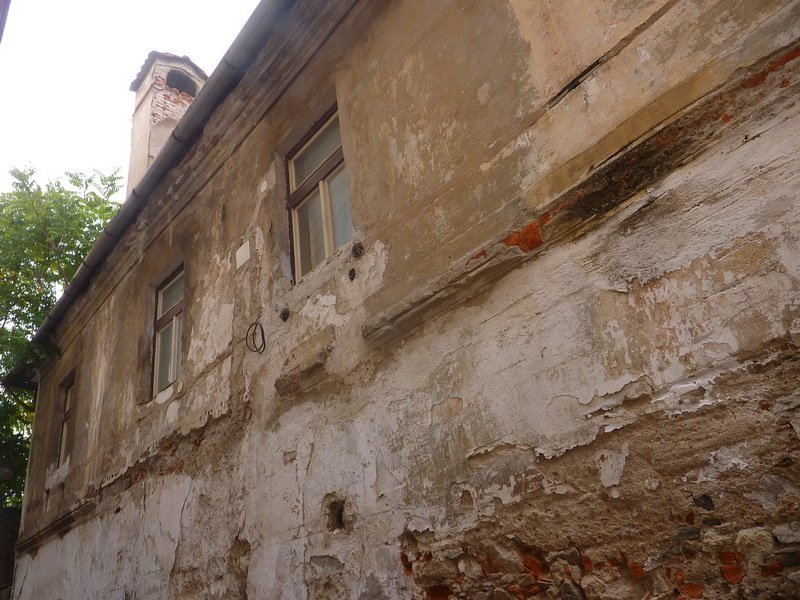
-
- Popular Post
- Popular Post
Okay, you fellow taffers.
I'm not promising anything amazing, but I'll give it a try.

I'd prefer to leave the Corbin-focused missions to Springheel and the rest of the main Corbin FM authors.
I'll use the contest as an excuse to work on that FM I was preparing for my Partners in Crime series.-
 6
6
-
Aberconwy House, one of the best-preserved medieval houses in Wales, originating in the 14th century. Includes a house museum.
If you happen to visit Wales, you can find it on 2 Castle Street in the town of Conwy.
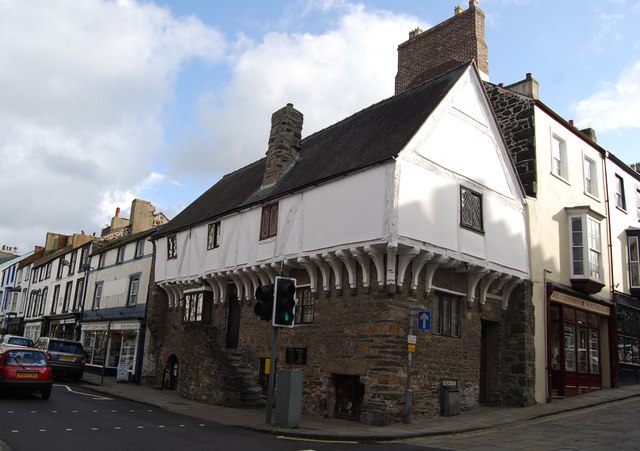
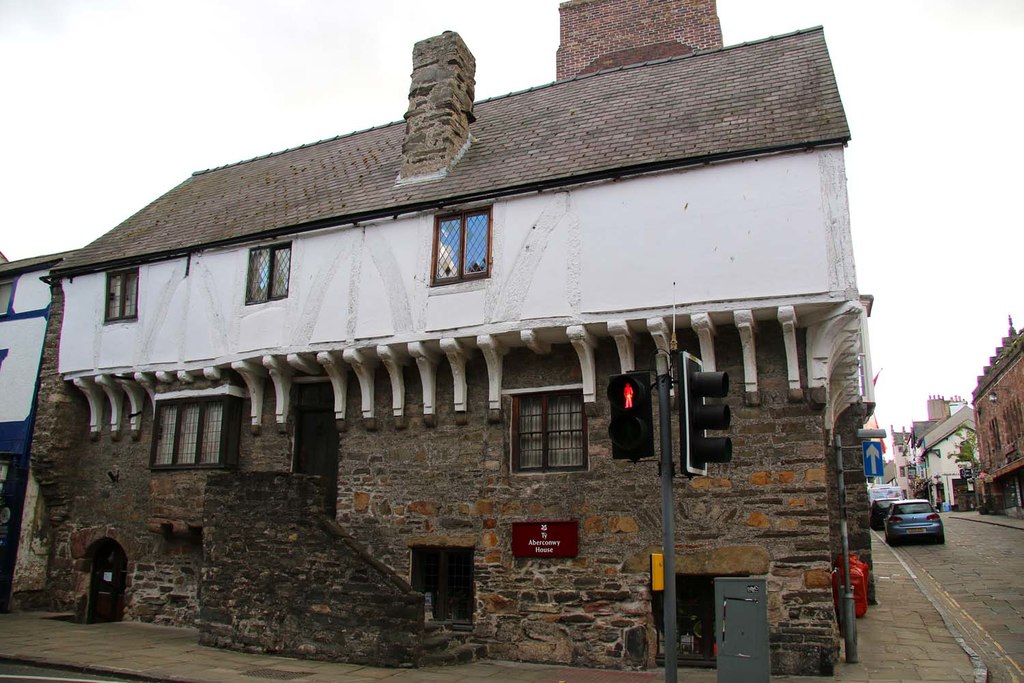
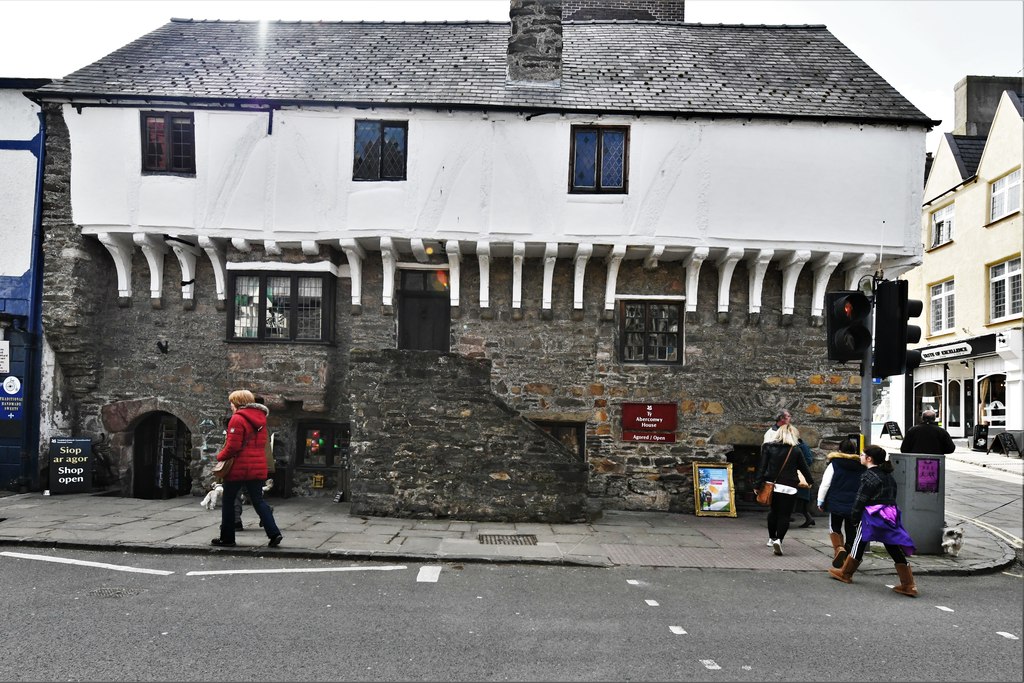

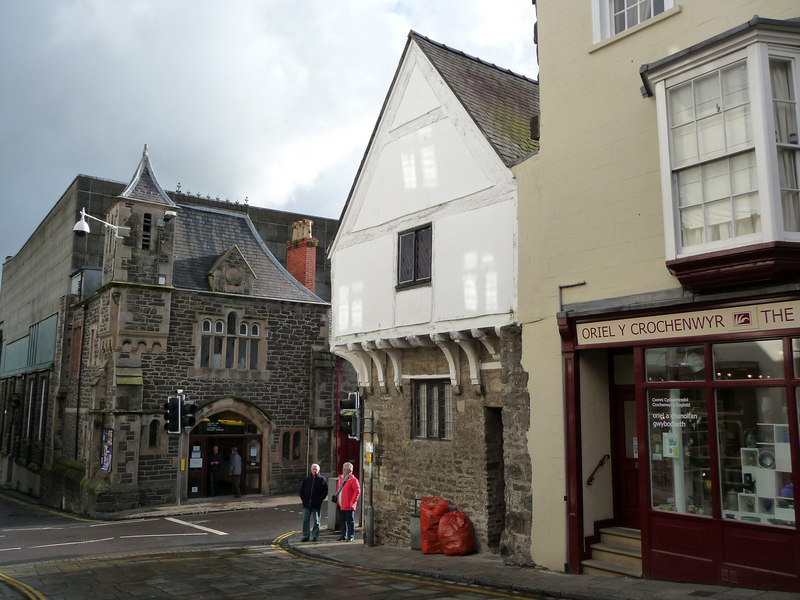
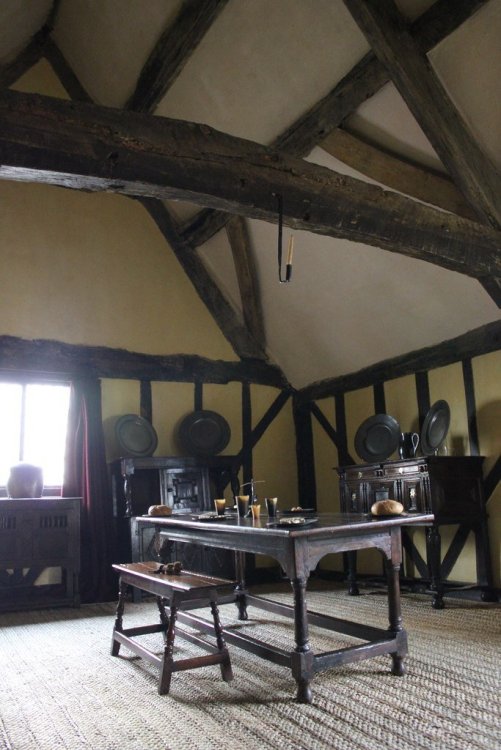
National Trust website for Aberconwy House
Visit Wales website for Aberconwy House
Geograph.co.uk entries for Aberconwy HouseWikimedia Commons entries for Aberconwy House
Conwy has several other preserved historical houses and buildings from earlier centuries. These include the later Tudor era Plas Mawr, which also has a house museum (and which I've already featured in this thread years earlier), and there's also the famous 'Smallest House in Great Britain' and plenty of preserved fortification monuments. Speaking of...
.jpg/1024px-Smallest_House_in_Great_Britain,_Conwy_(8035).jpg)
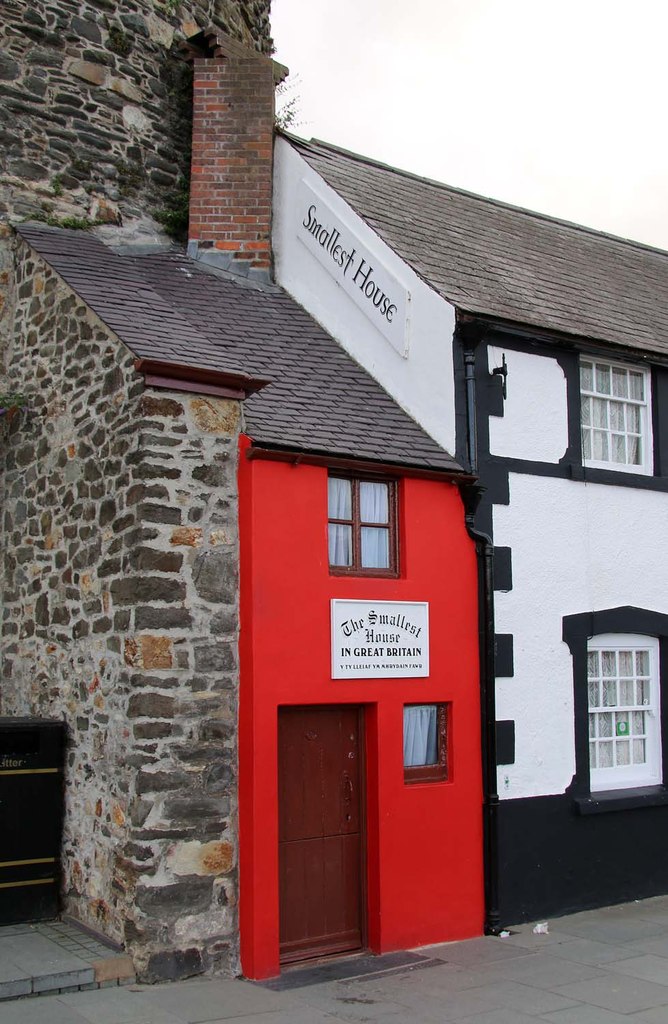
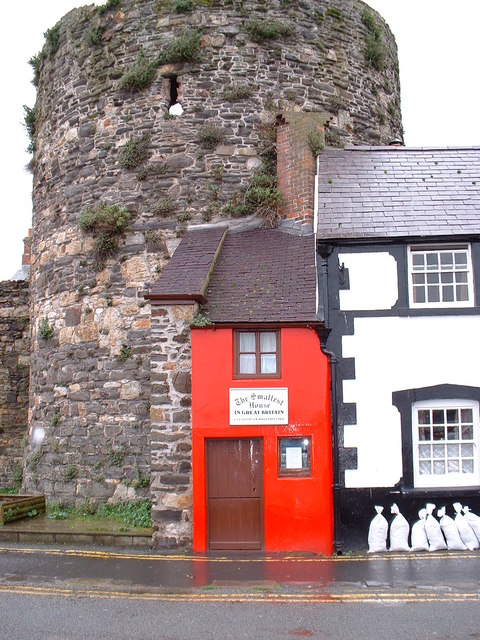
The 'Smallest House in Great Britain', in Conwy, a tourist attraction that's more on the cheesy side due to its notoriety/record, but is still a nice example of a period house centuries old, that was built in the spirit of "How can our ingenuity provide us with a small house and lodgings even in a narrow, cramped part of the street ?" vernacular ingenuity.Official website for the Smallest House
Visit Conwy website for the Smallest House
Geograph.co.uk entries for the Smallest HouseWikimedia Commons entries for the Smallest House
Various narrow houses from around the world
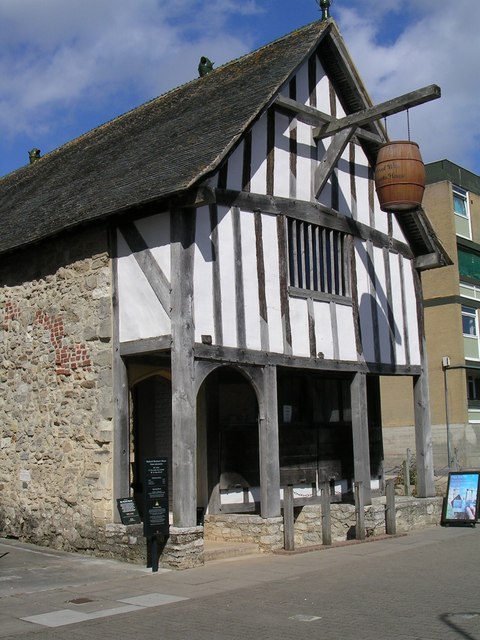

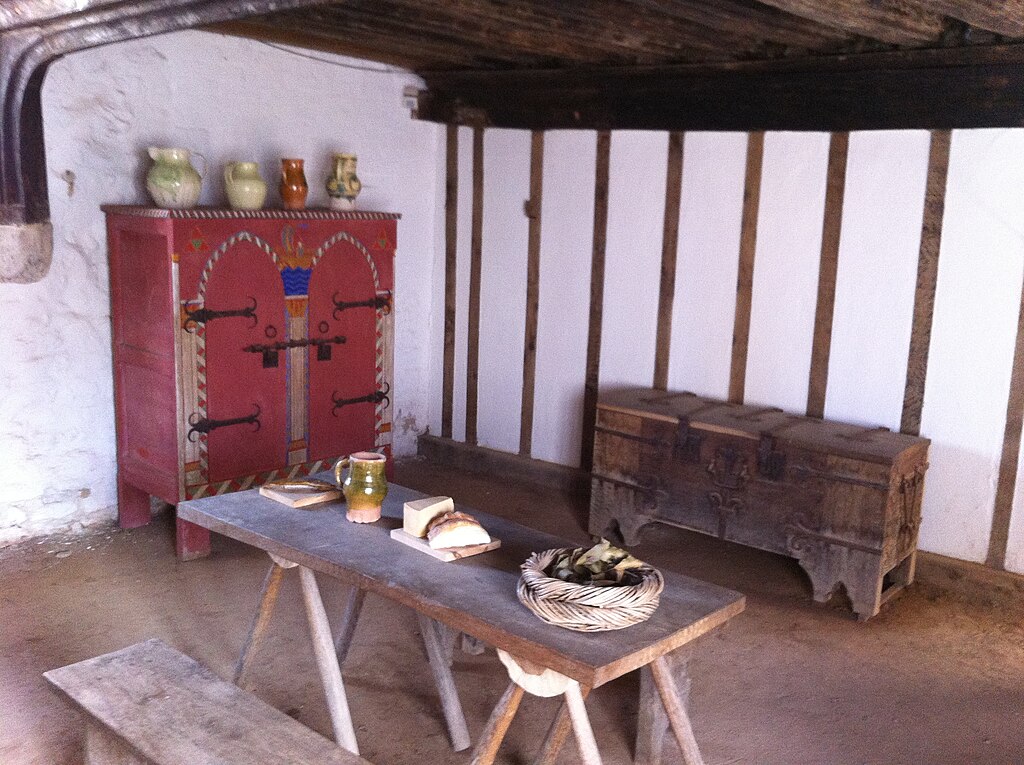





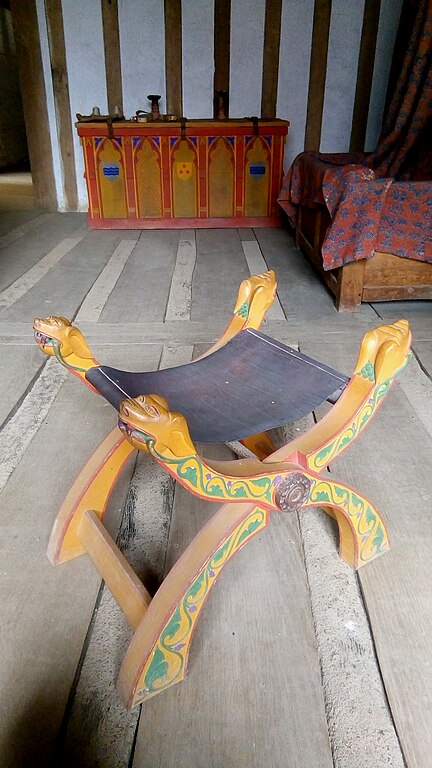

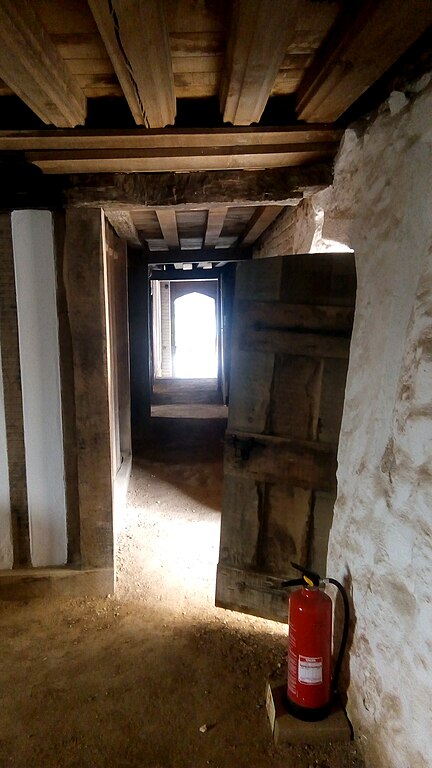
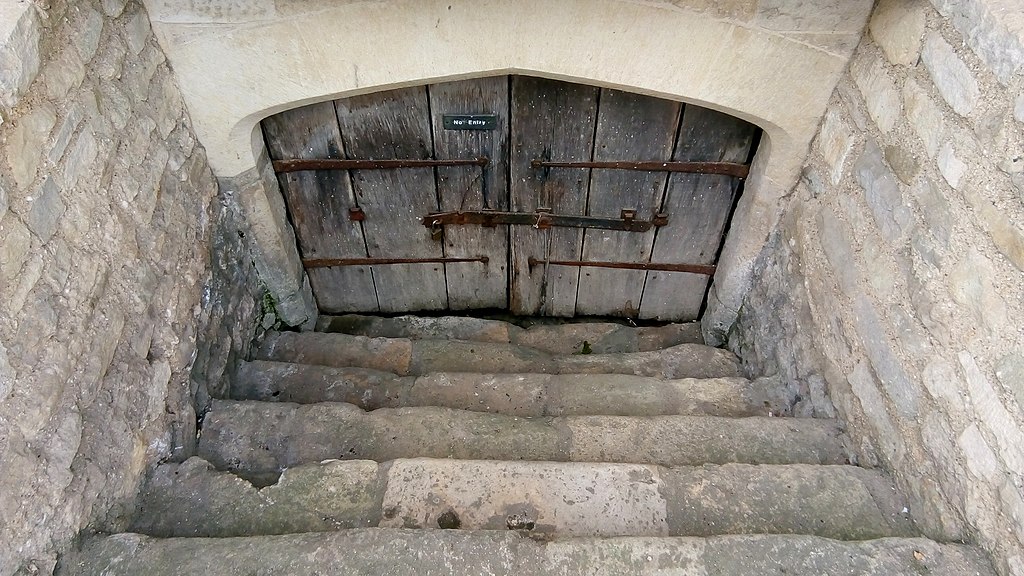

English Heritage website for the Medieval Merchant's House in Southampton
Geograph.co.uk entries for the Medieval Merchant's House in SouthamptonWikimedia Commons entries for the Medieval Merchant's House in Southampton
Combine these photos with the medieval early modern housing and market hall photos from my previous post, and you'll have plenty of inspiration on how to furnish rural houses and townhouses in TDM's setting.-
 1
1
-
-
I've decided to make a list of my posts in this thread thus far. Only the posts where I shared images of real world locations for inspiration (mostly reference images of various historical architecture).
19th century octagon houses as inspiration for more fancy houses of industralists (12 May 2015)
Old electric powerplant building in Poprad, Slovakia - red brick Gothic Revival stylistics (17 July 2015) - needs image fixin'
Plas Mawr in Conwy, Wales - well-preserved medieval and early modern Welsh townhouse, with interior museum (29 July 2015)
Castell Coch in Wales - reconstructed medieval castle, with minor 19th century industrial details (13 August 2015) + addendum
Illustrations and concept art for Bree from various game projects (3 September 2015)
Run-down Neo-classical manor house in a rural area (15 December 2015) - dated image links, I need to fix 'em
Smaller but interesting manor houses and fortified manor houses in Slovakia (30 August 2016)
Manor houses and fortified manor houses in Slovakia (13 March 2017)
Environmental storytelling inspired by "reading" real world ruins (3 May 2021)
Stokesay Castle rural fortified manor house, one of the few of its kind in England (26 March 2024)
Houses, inns and market halls of medieval and early modern England (26 March 2024)
Aberconwy House in Conwy, Wales - well-preserved 14th century Welsh medieval merchant townhouse (27 March 2024)
-
On 2/14/2024 at 6:59 PM, jaxa said:
Ah, pity I wasn't reading the forums back in February.
I'm fond of that game, along with Bugbear's other early title, Rally Trophy.
I was never too good at FlatOut, but it was always a hoot to play.
-
 2
2
-
-
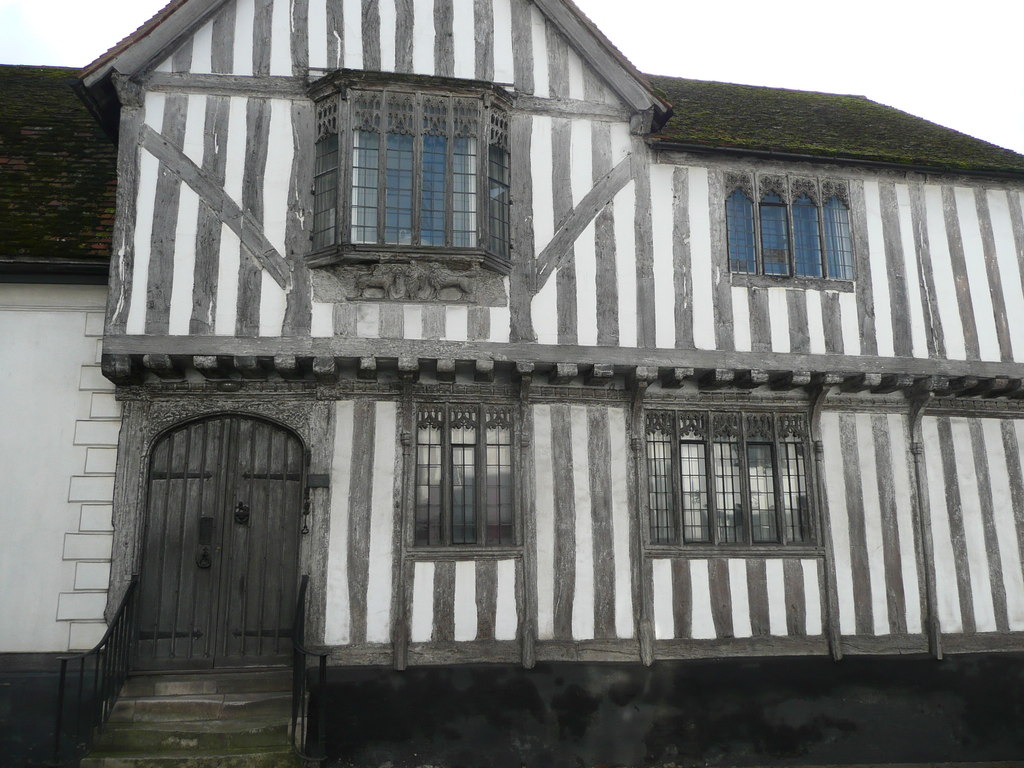
Salter's Hall, Sudbury, Suffolk, England - 15th century
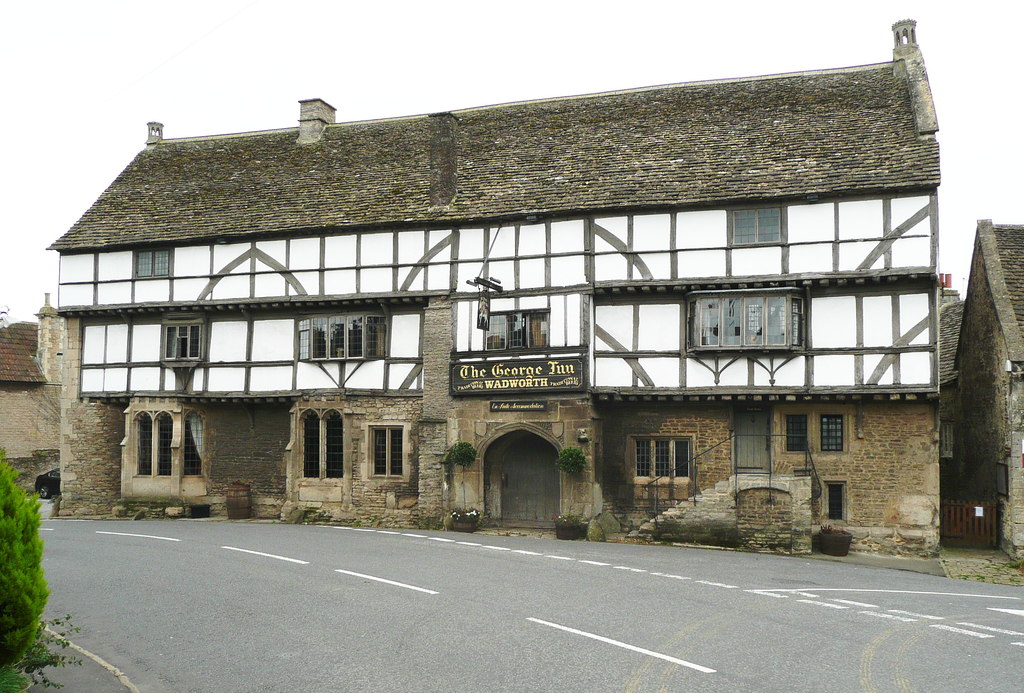
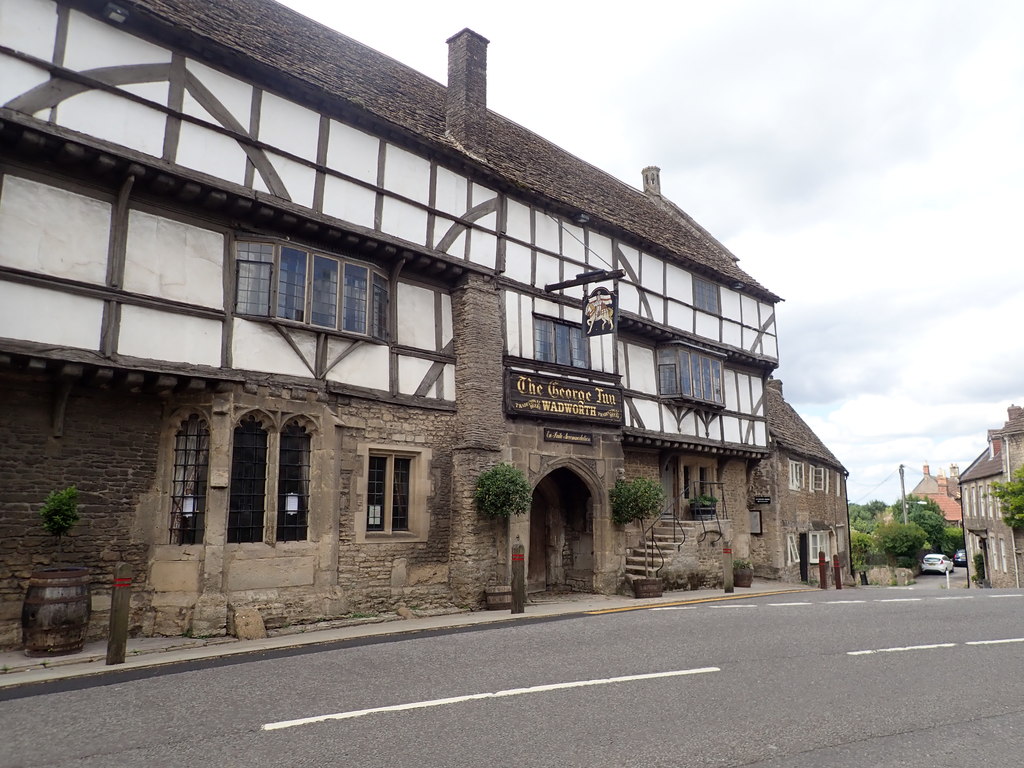
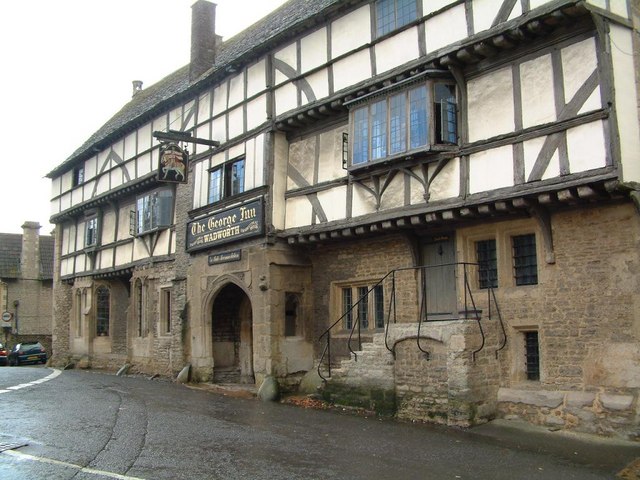
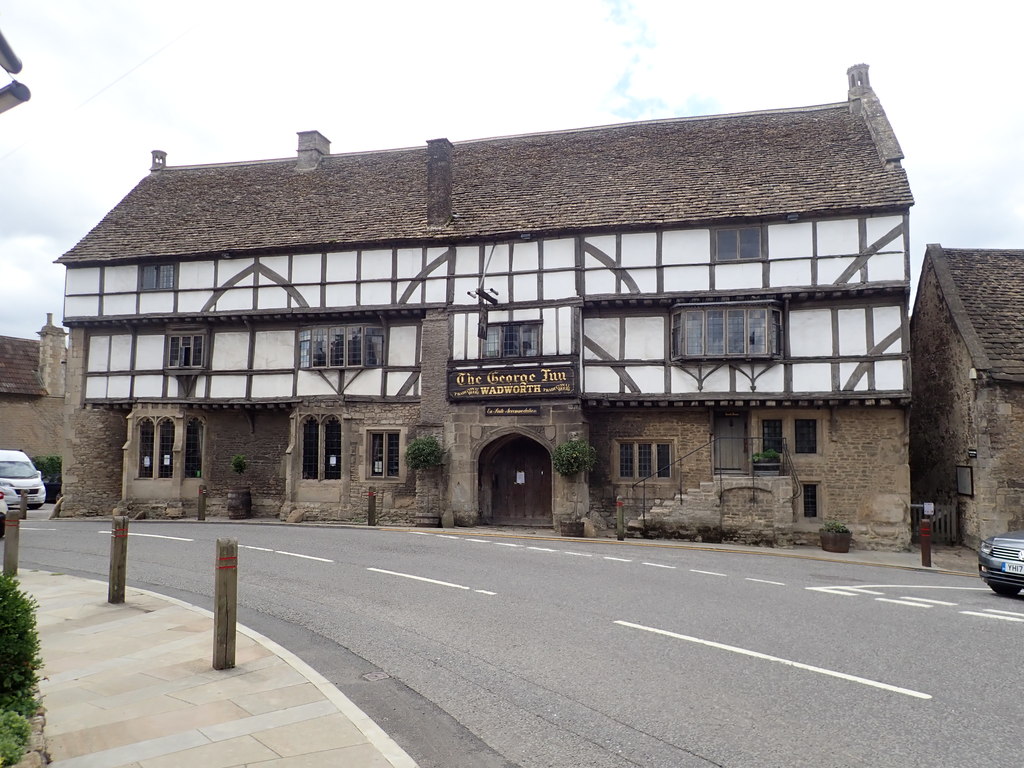
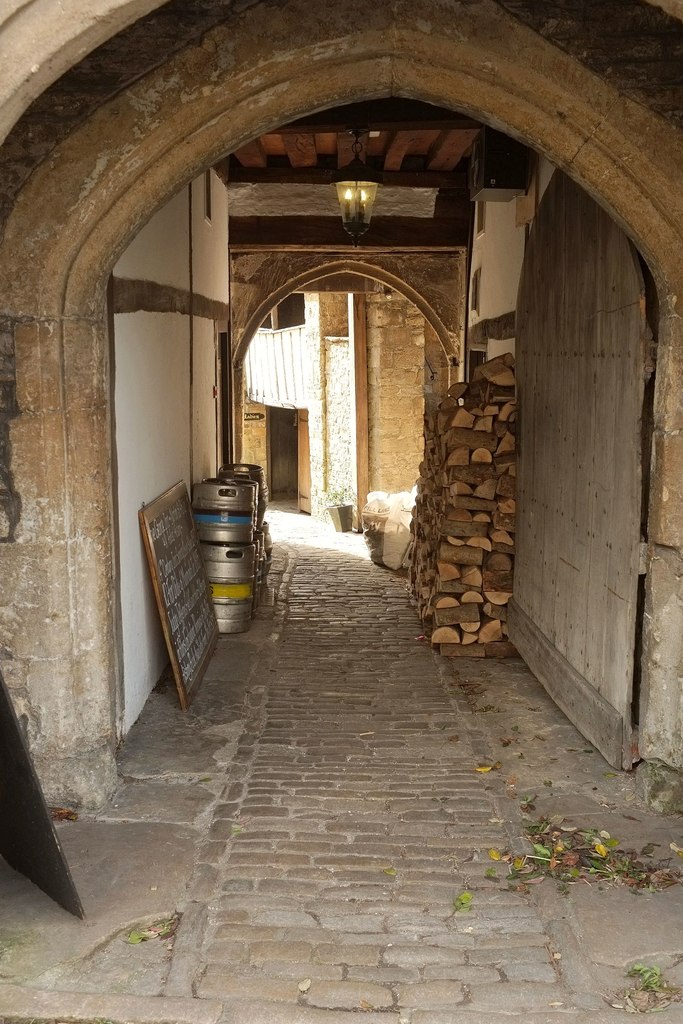
The George Inn, near Norton St Philip, Somerset, England - 14th-15th century, upper storeys repaired in 16th century after fire
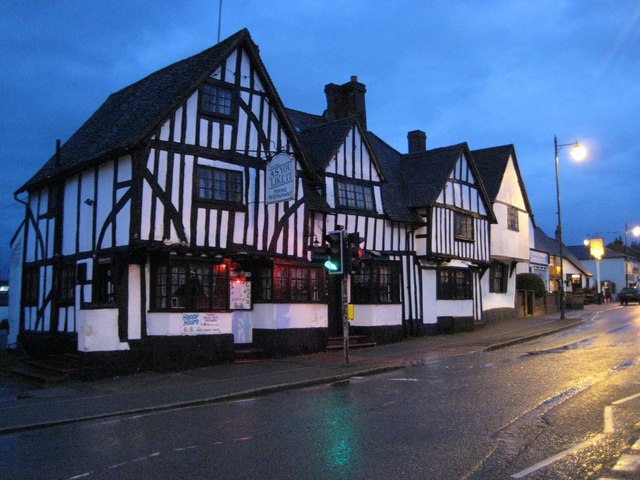
The George and Dragon public house (now a former inn), Codicote, Hertfordshire, England - dates back to the 14th and 15th century, not used as a pub anymore since the late 2000s, but has a restaurant instead
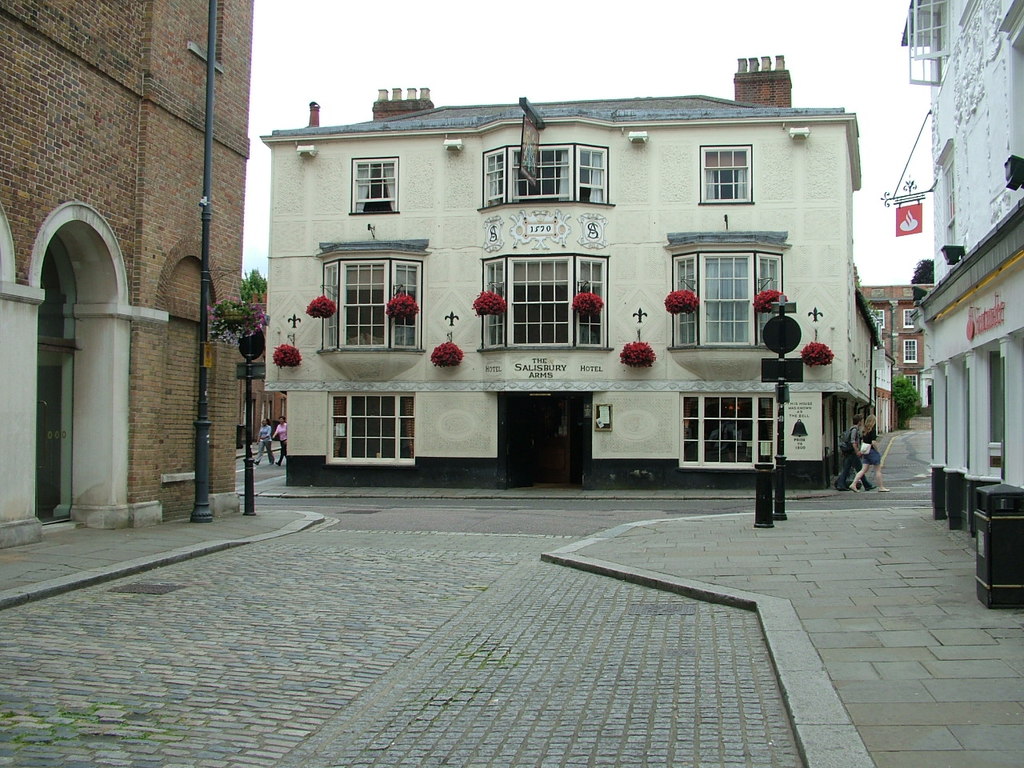
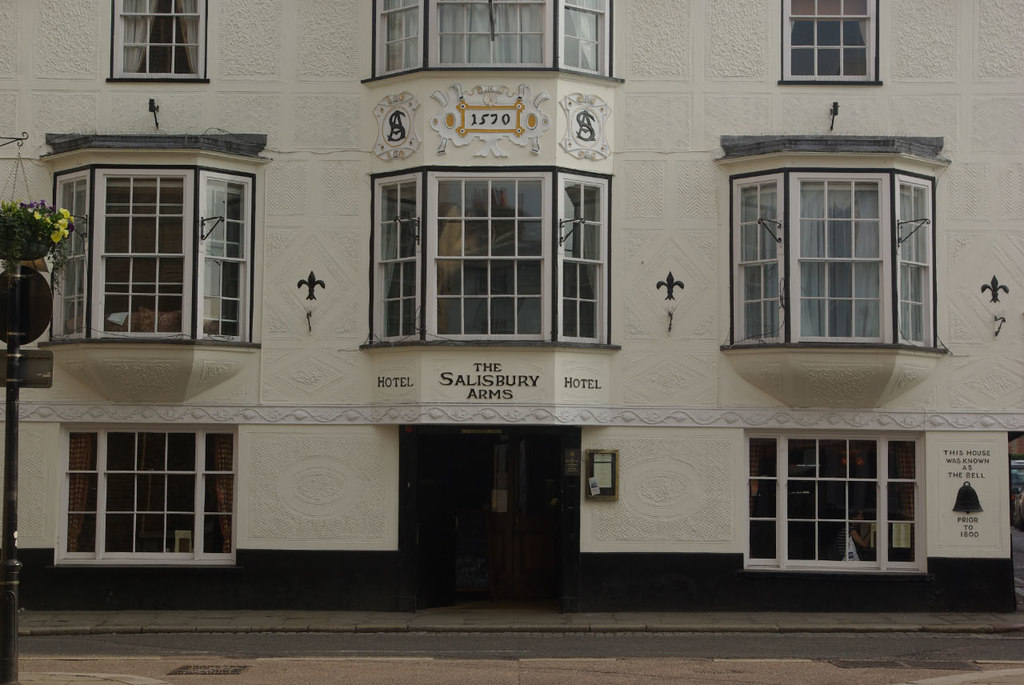
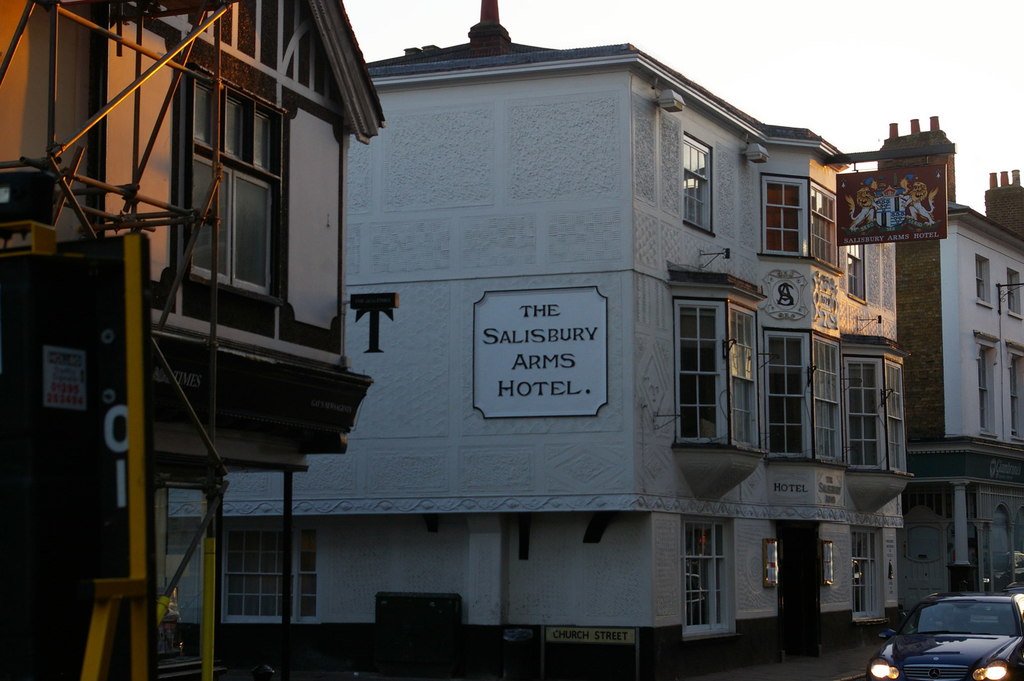
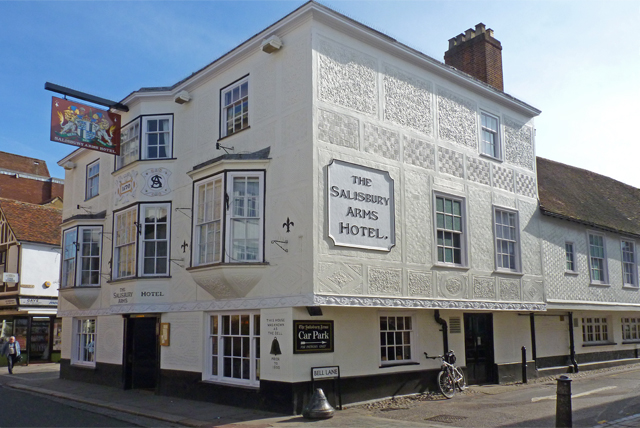
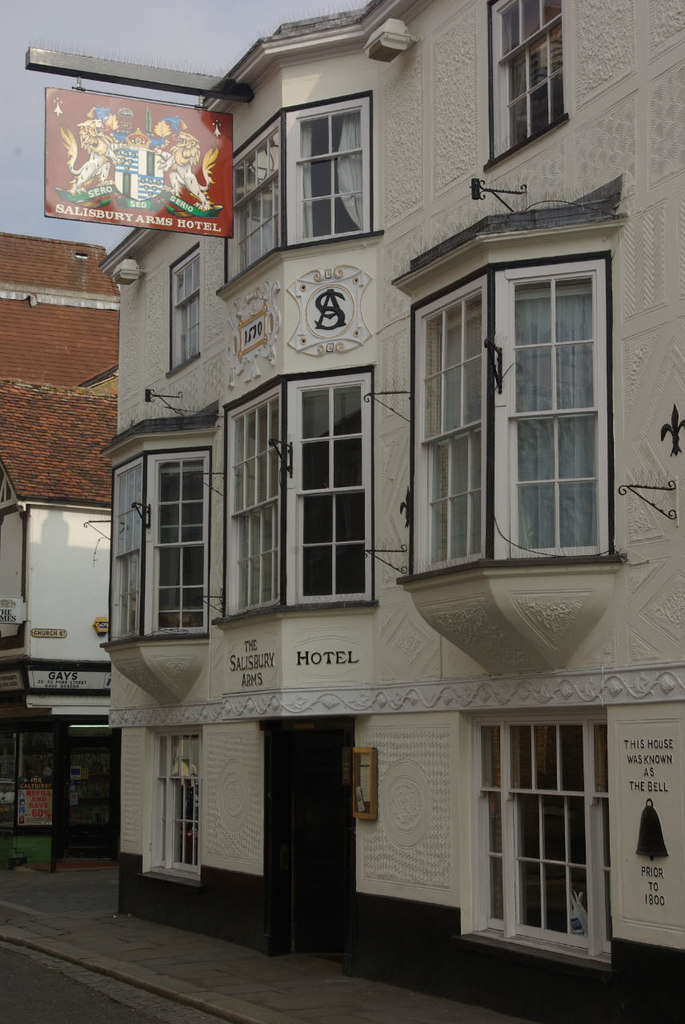
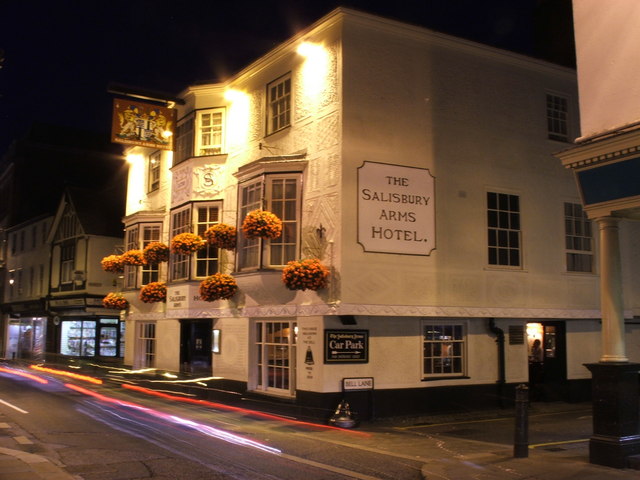
The Salisbury Arms Hotel, Hertford, Hertfordshire - the oldest parts date back to the 15th century, the inn was called The Bell until 1800, there had been some minor additions in the 17th, 19th and 20th century
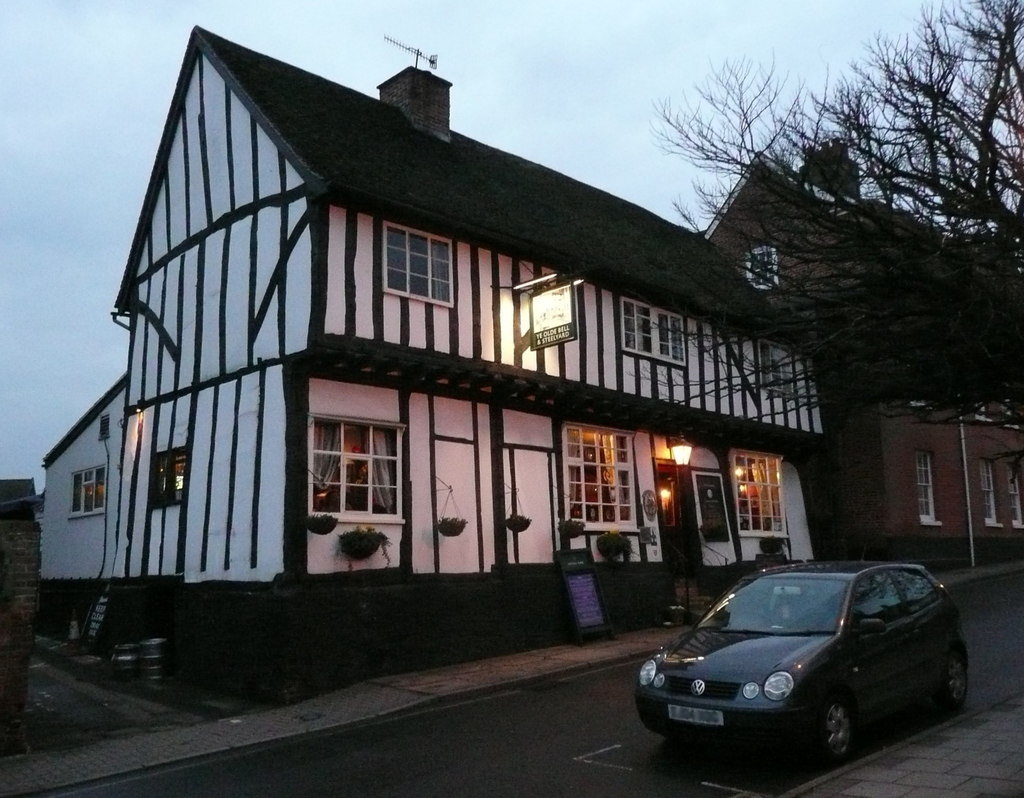
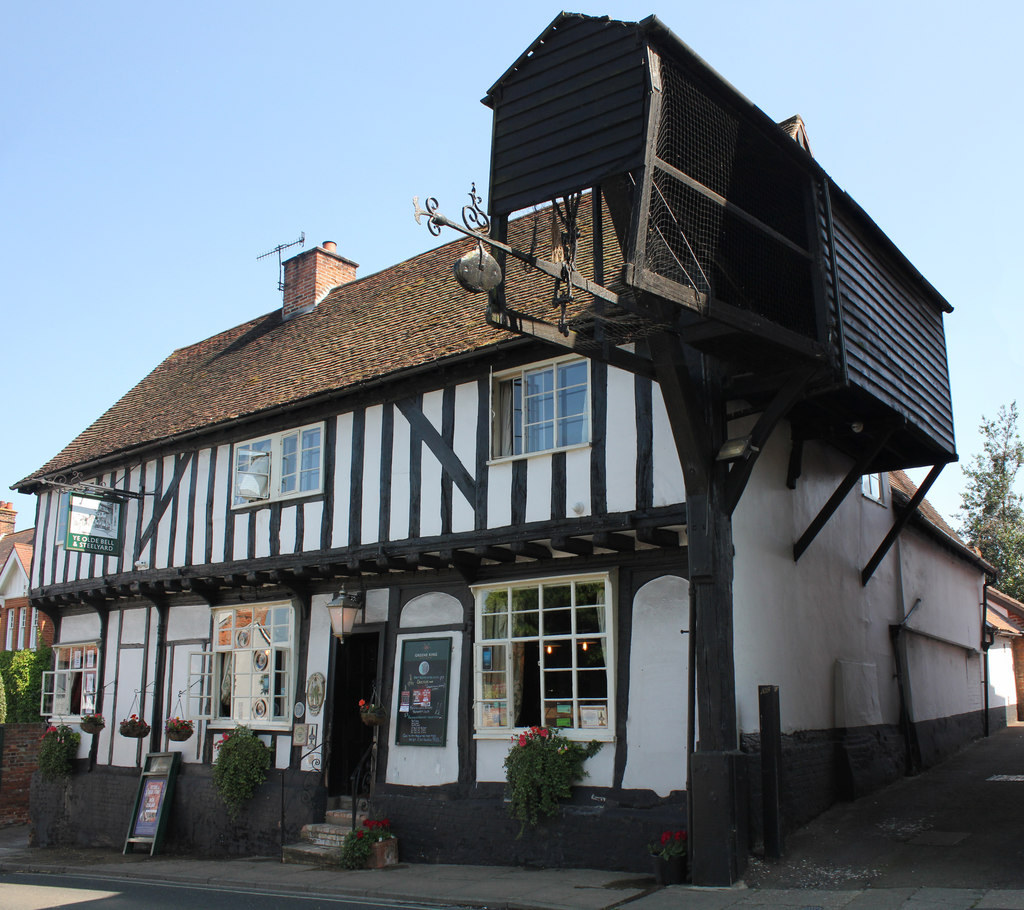
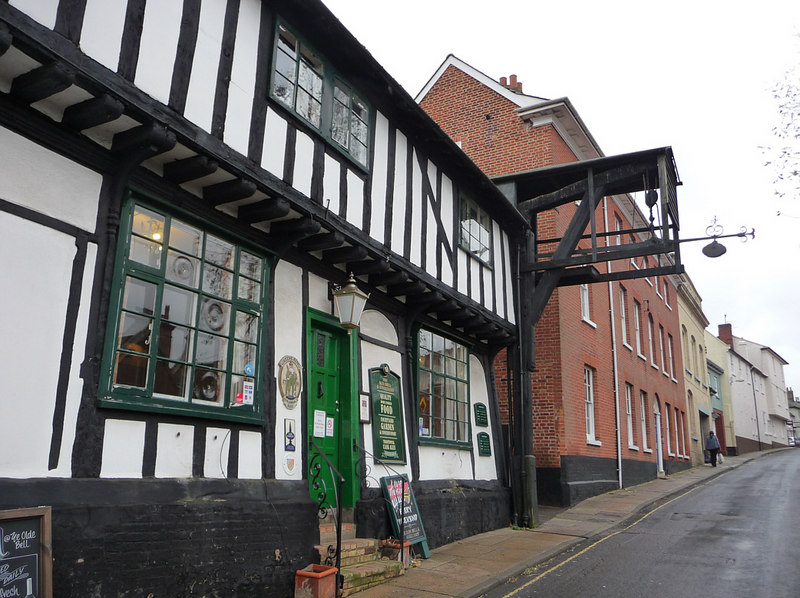
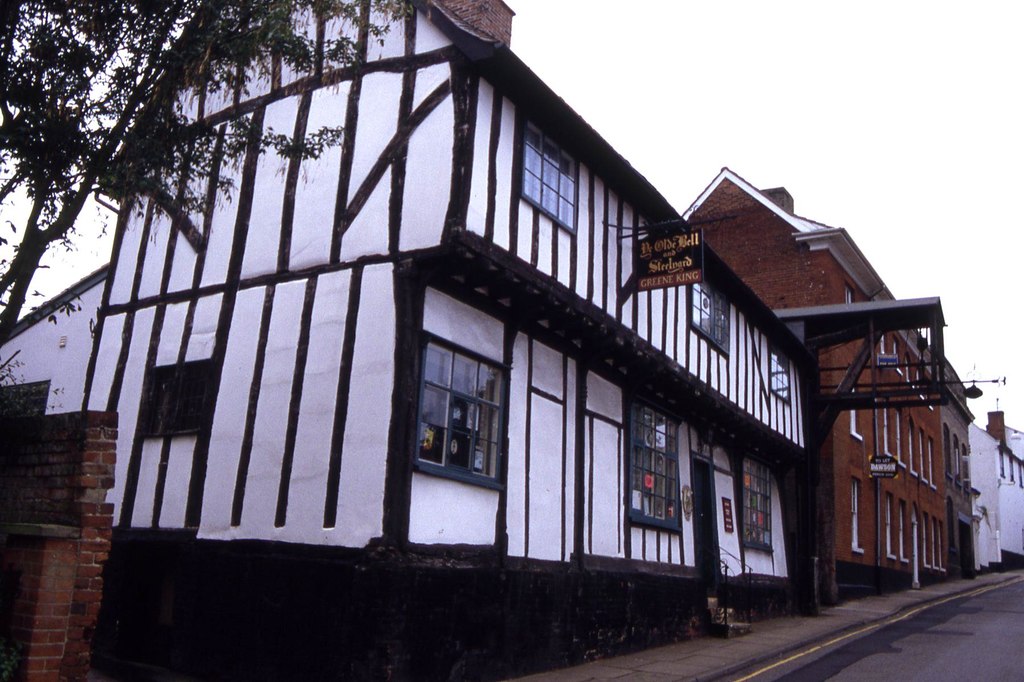
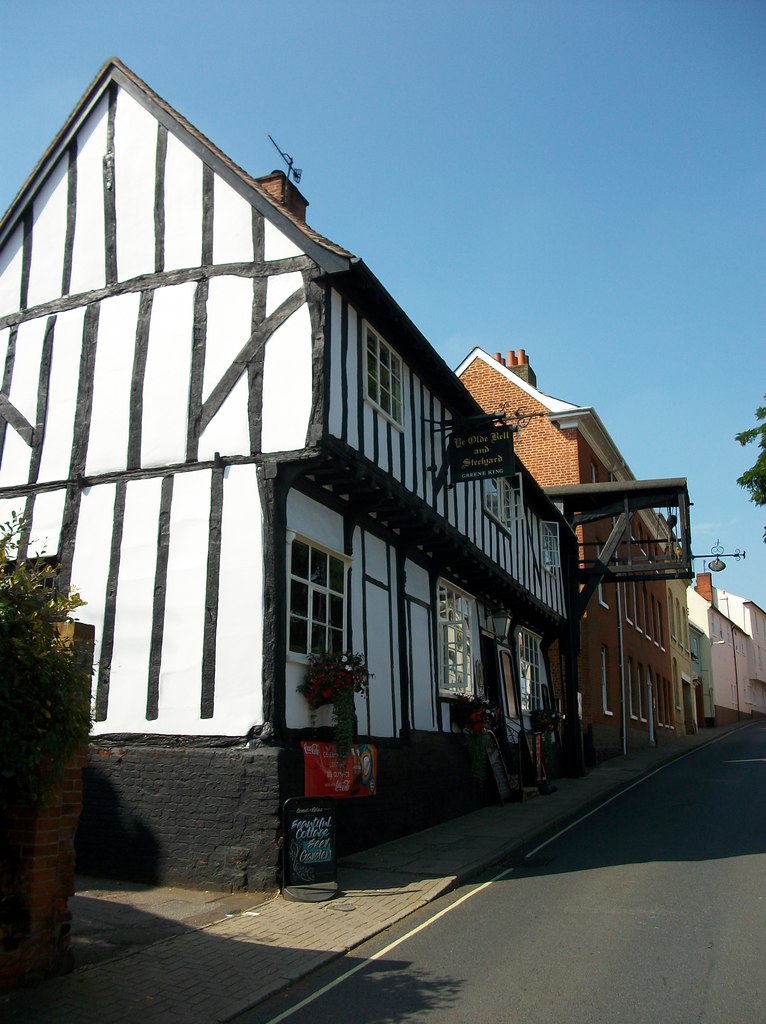
The Bell / Ye Olde Bell and Steelyard inn, New Street, Woodbridge, Suffolk, England - an inn constructed during the second half of the 16th century, its street then known as New Street. The latter of the two names is the contemporary name, the former name the original one. Disregard the Volkswagen Polo, please, LOL. Woodbridge has several old rural inns dating back to the early modern era, e.g. The Angel, also from the second half of the 16th century.
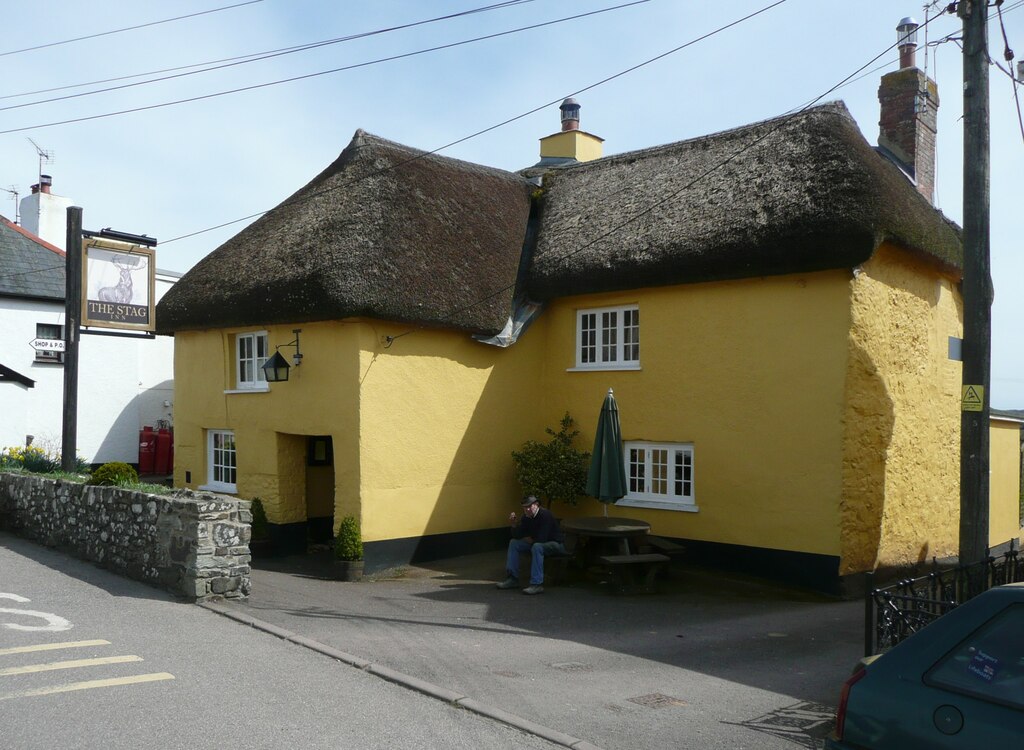
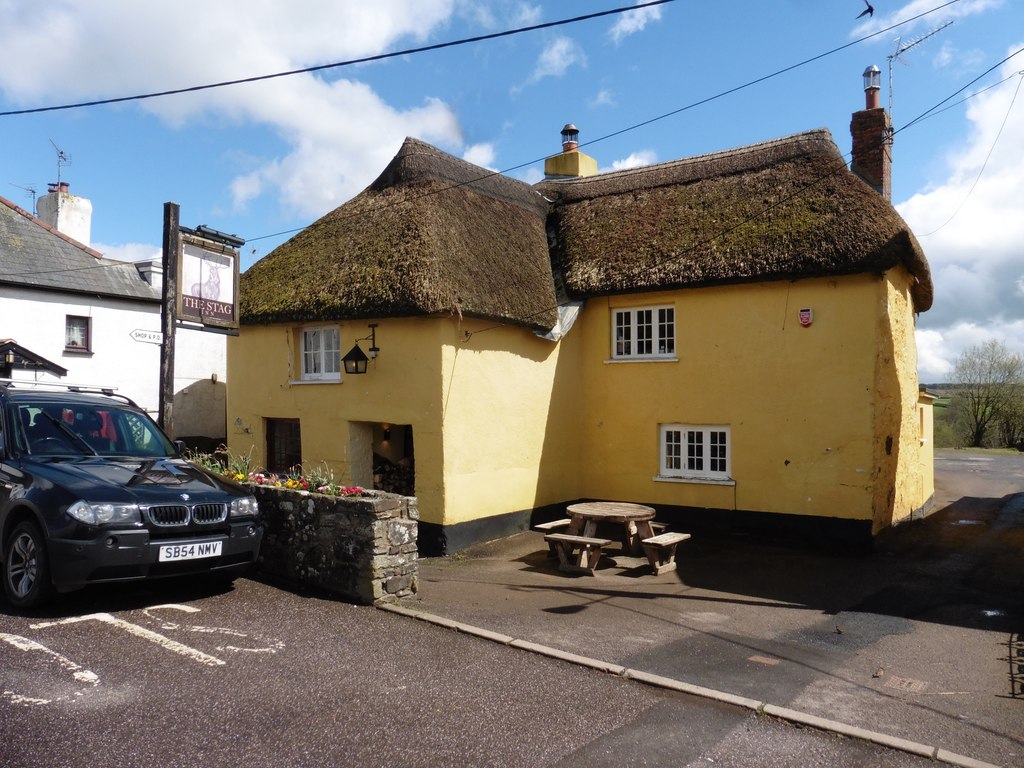
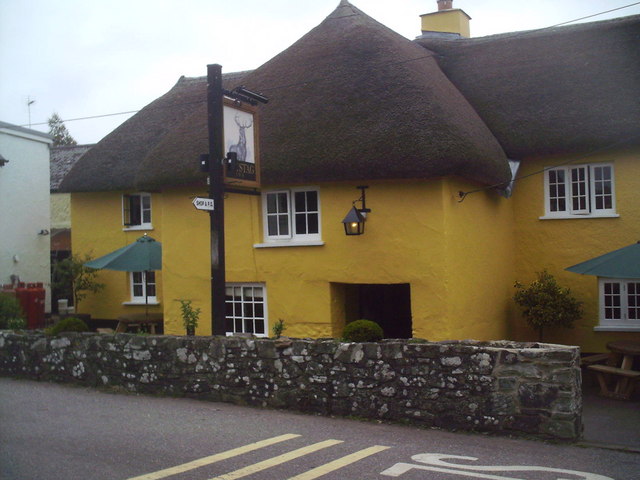
The Stag Inn, Rockeford, Devon, England - the oldest parts are apparently 12th/13th century, the overall look solidified in the 17th century
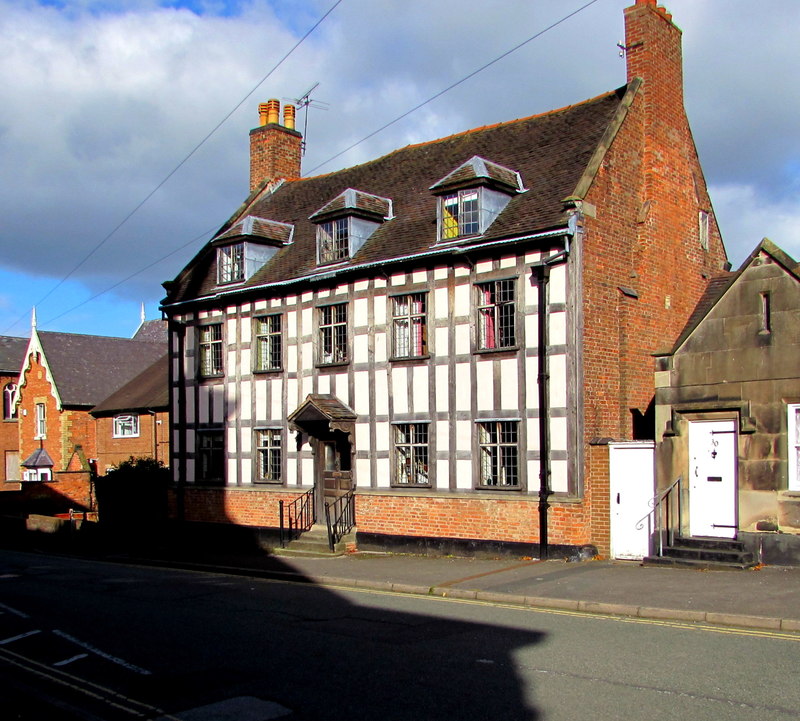
Ellesmere House, Whitchurch, Shropshire, England - early 18th century house, showing the transition from traditional vernacular timber-based construction to brick-based construction (I feel this could be used as inspiration for depicting townhouses reflecting TDM's socio-cultural tradition from a more medieval era to a tentative early industrial era)
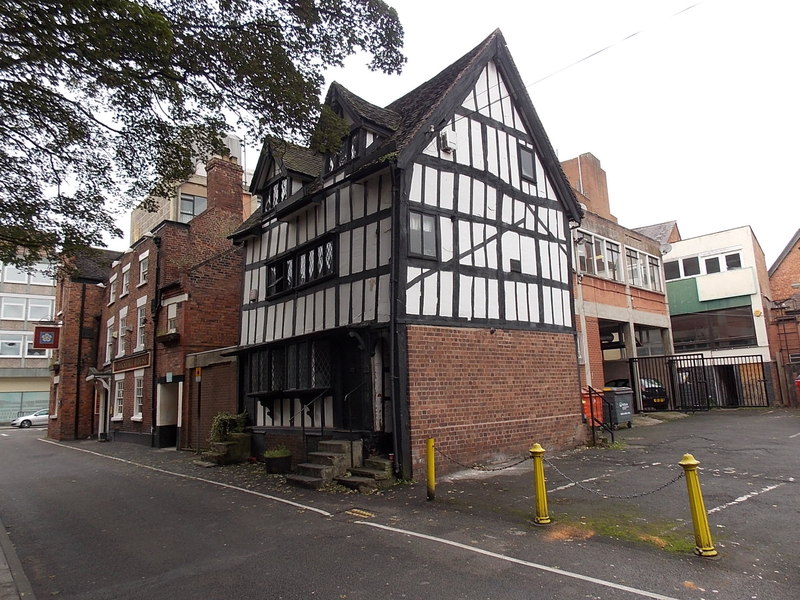
St Mary's Cottage, Shrewsbury, Shropshire, England - I just found this a cute timber-framed house, so feel free to use it as inspiration for smaller TDM townhouses or taller rural houses in a market town, village, or something or other

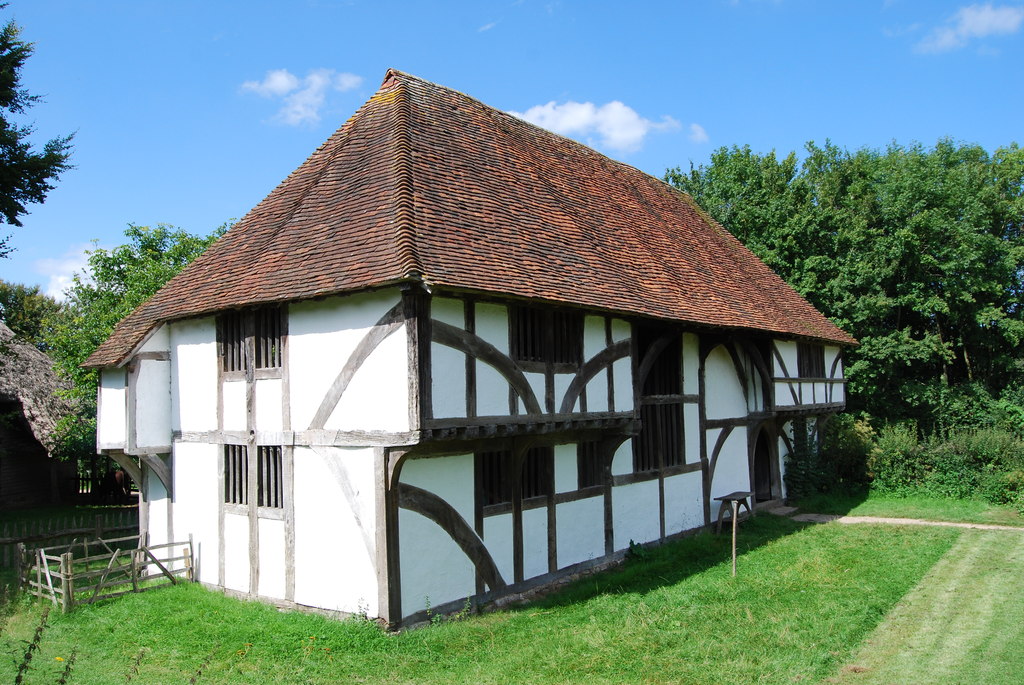
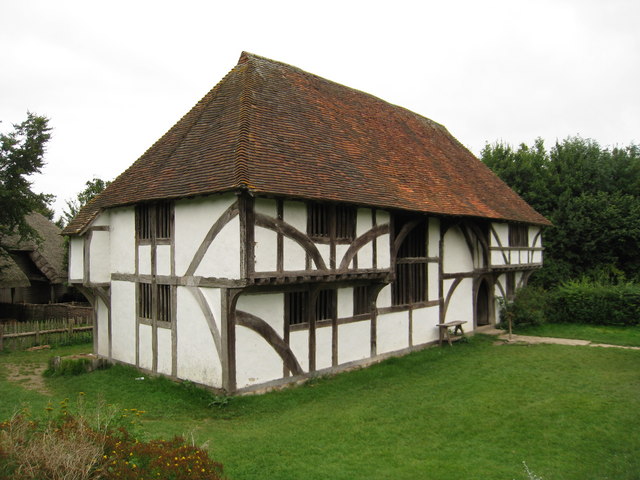
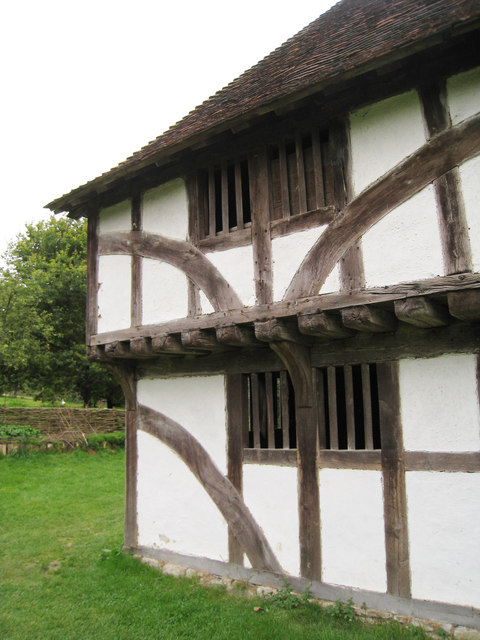
"Bayleaf House", an early 16th century farmhouse, originally from Chiddingstone, Kent, now at the Weald and Downland Living Museum, an open-air museum in Singleton, West Sussex, south England
3D tour of the "Bayleaf House" at this open-air museum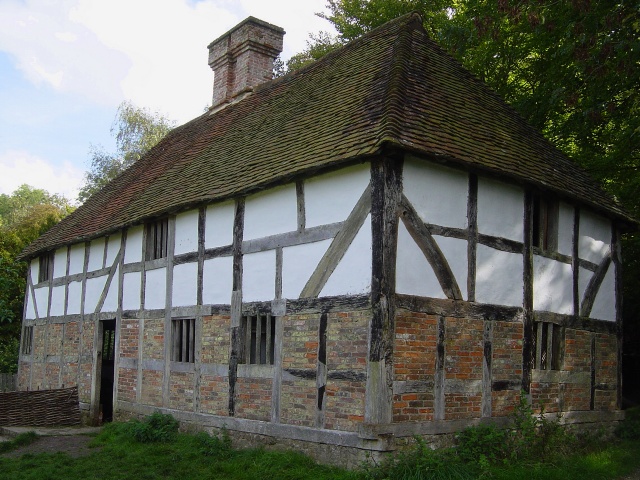
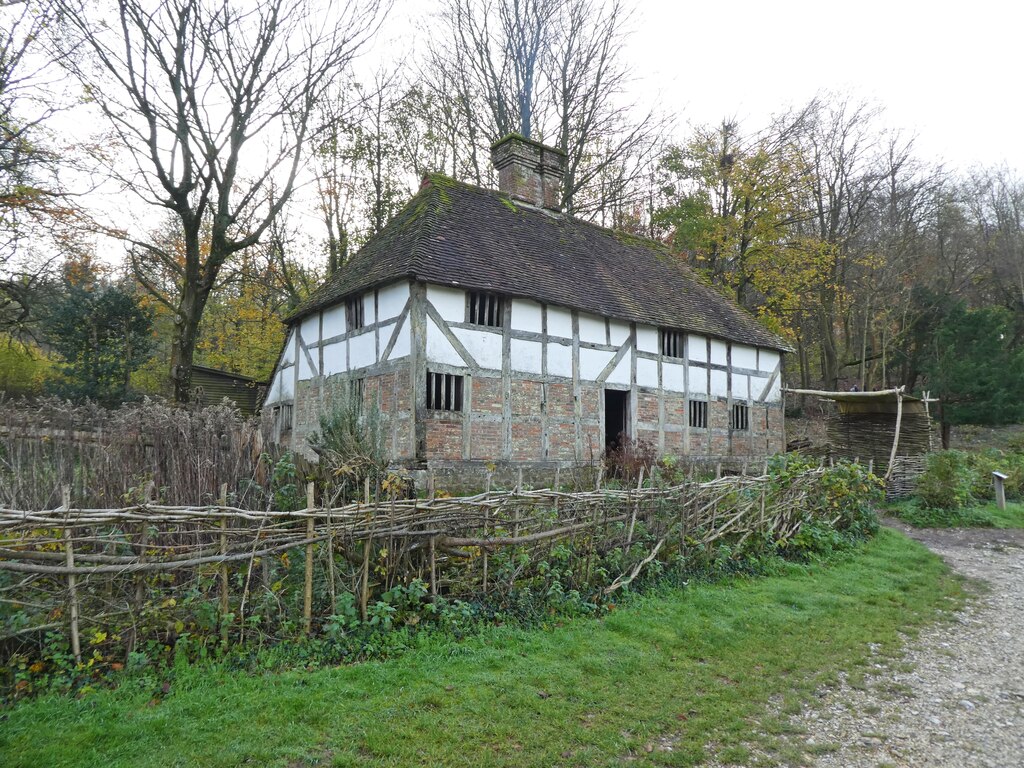
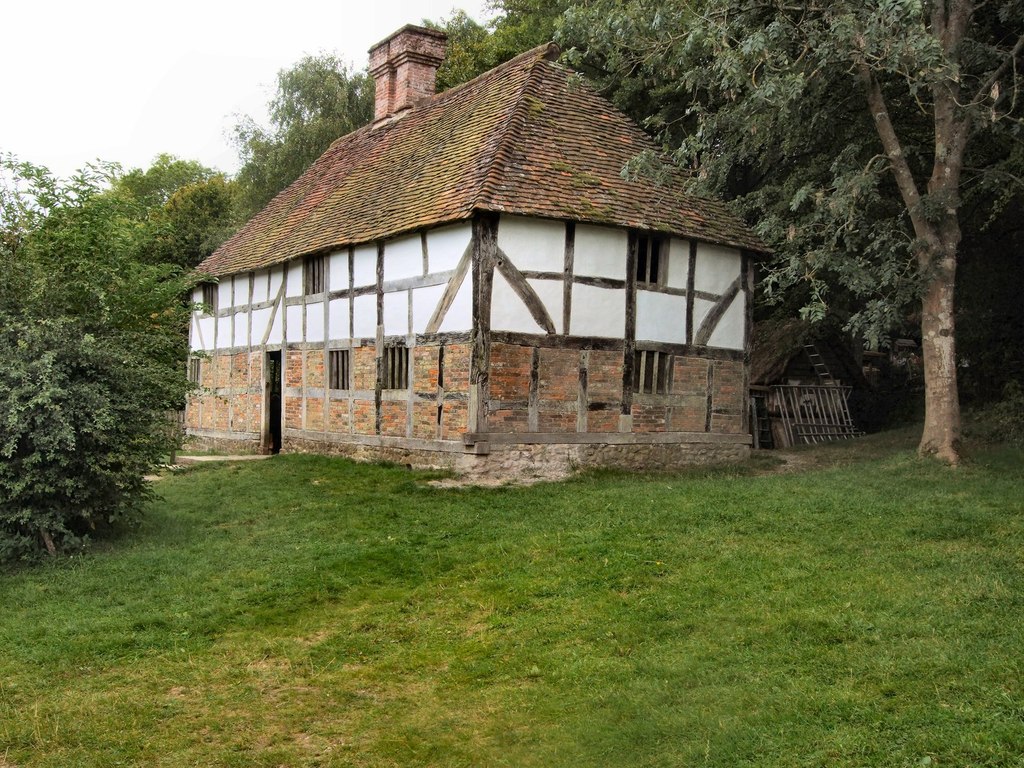
Farmhouse built in 1609, originally in Midhurst, Sussex, now at the Weald and Downland Living Museum, an open-air museum in Singleton, West Sussex, south England
3D tour of the 1609 farmhouse at this open-air museum
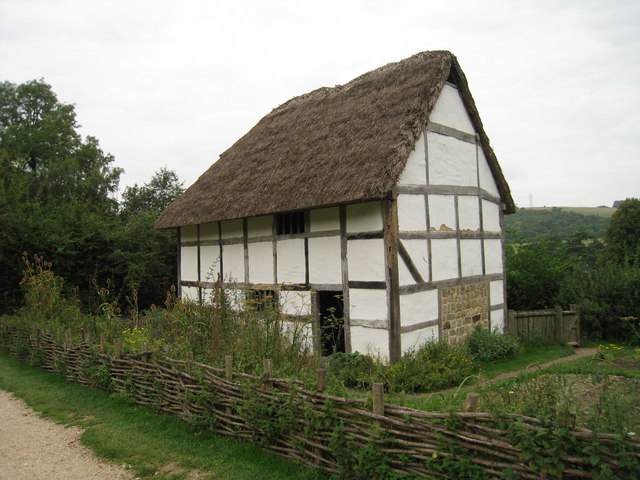
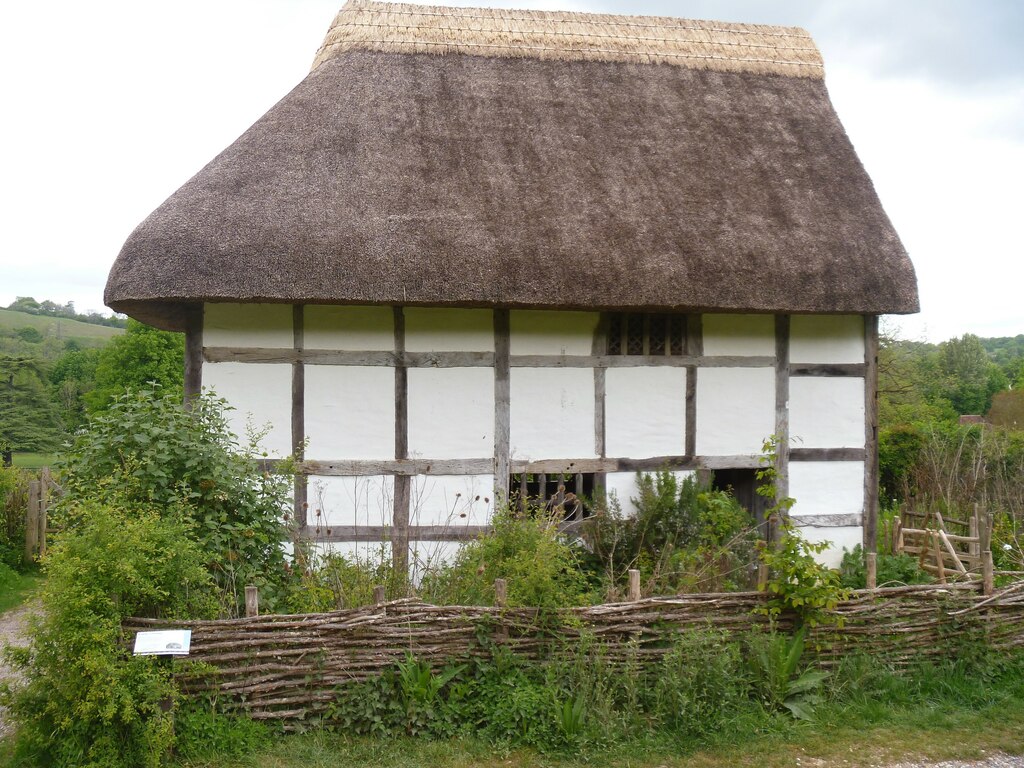
Poplar Cottage, originally from Washington, Sussex, England, now at the Weald and Downland Living Museum, an open-air museum in Singleton, West Sussex, south England
3D tour of the Poplar Cottage at this open-air museum
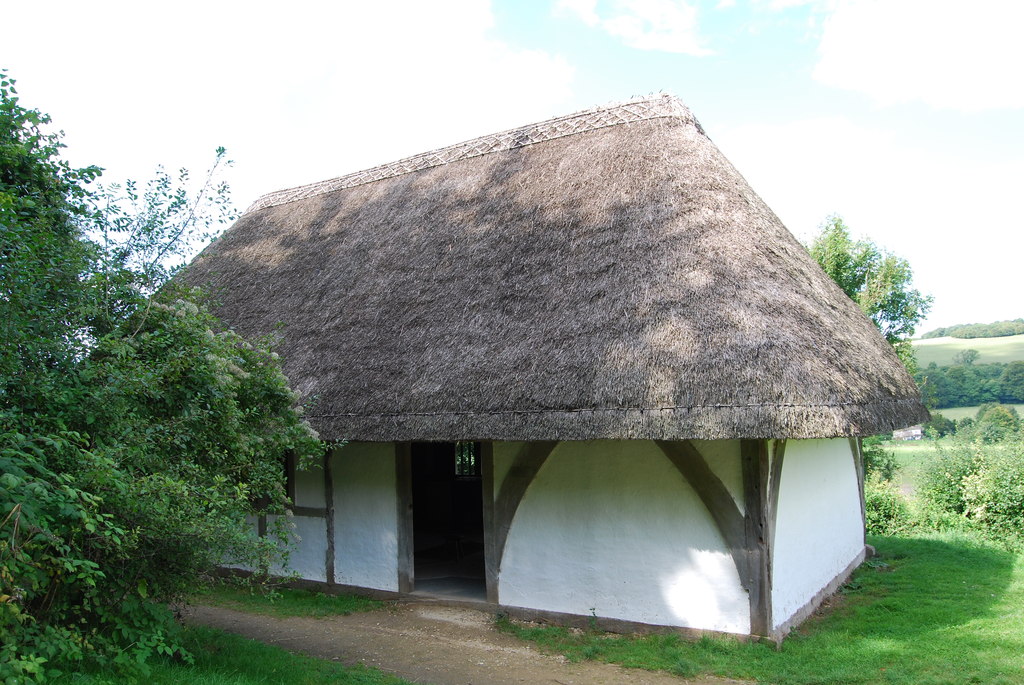
A small house, originally from Boarhunt, Hampshire, now at the Weald and Downland Living Museum, an open-air museum in Singleton, West Sussex, south England
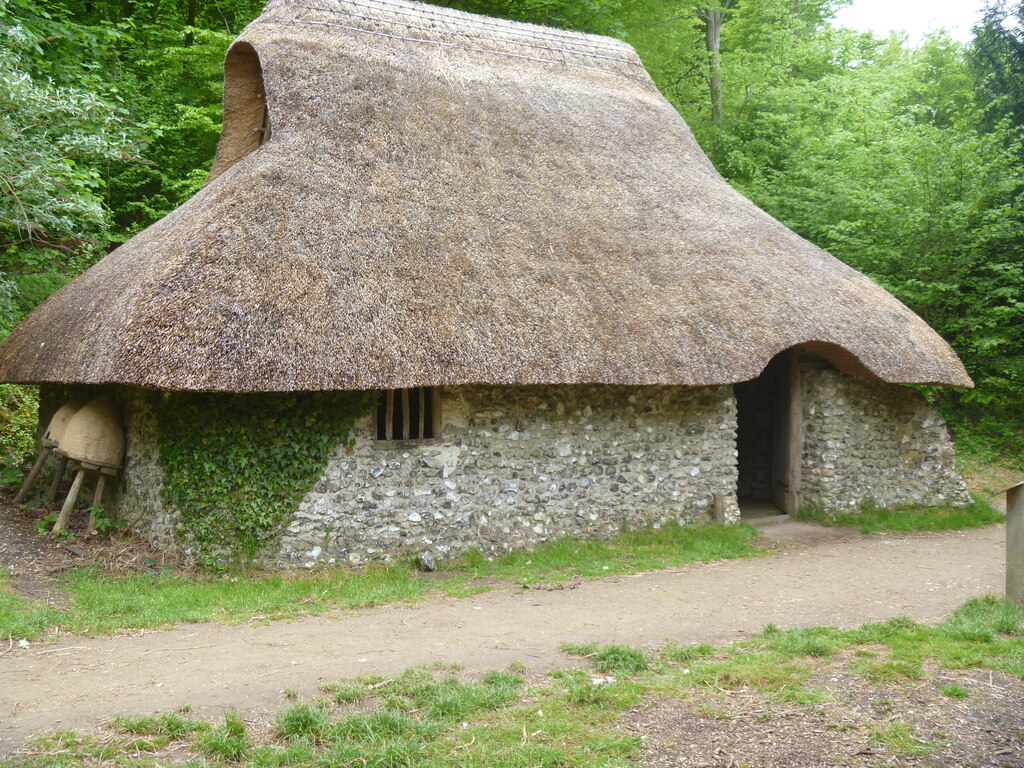
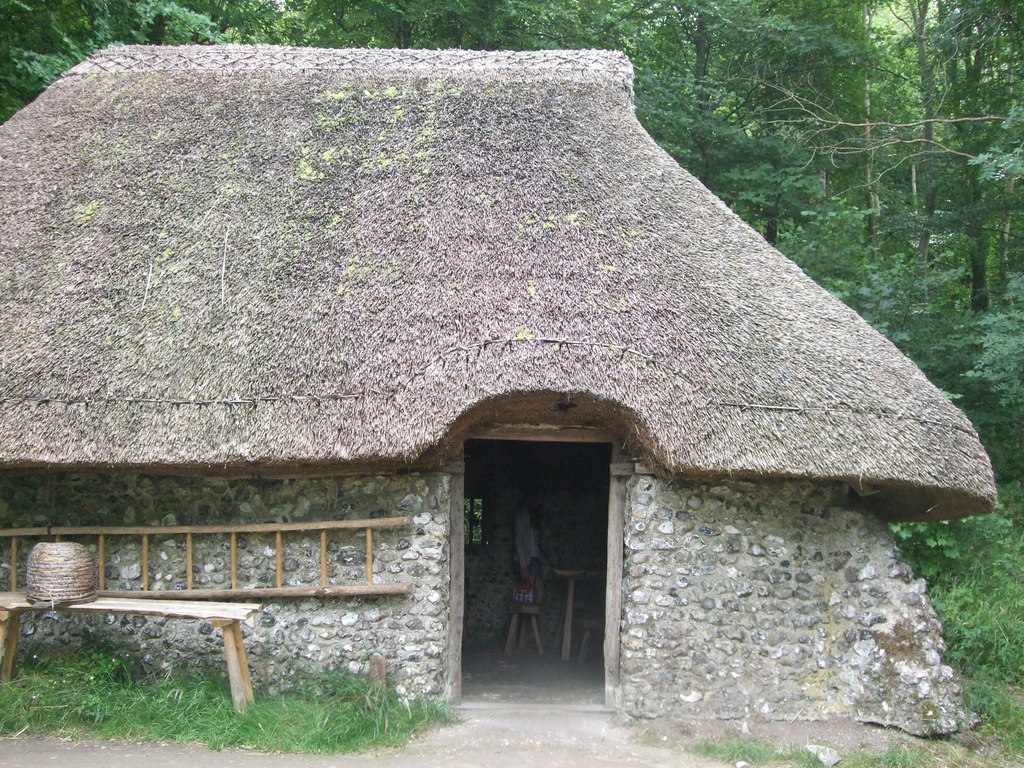
Medieval stone cottage with thatched roof, originally from Hangleton, Sussex, England, now at the Weald and Downland Living Museum, an open-air museum in Singleton, West Sussex, south England
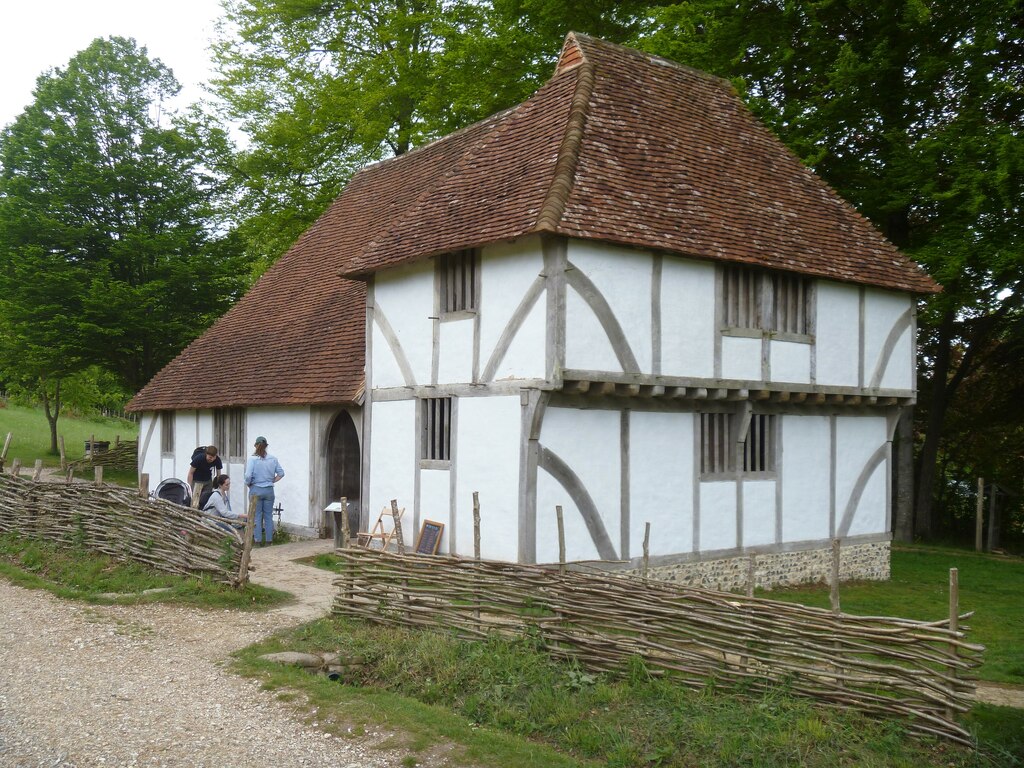
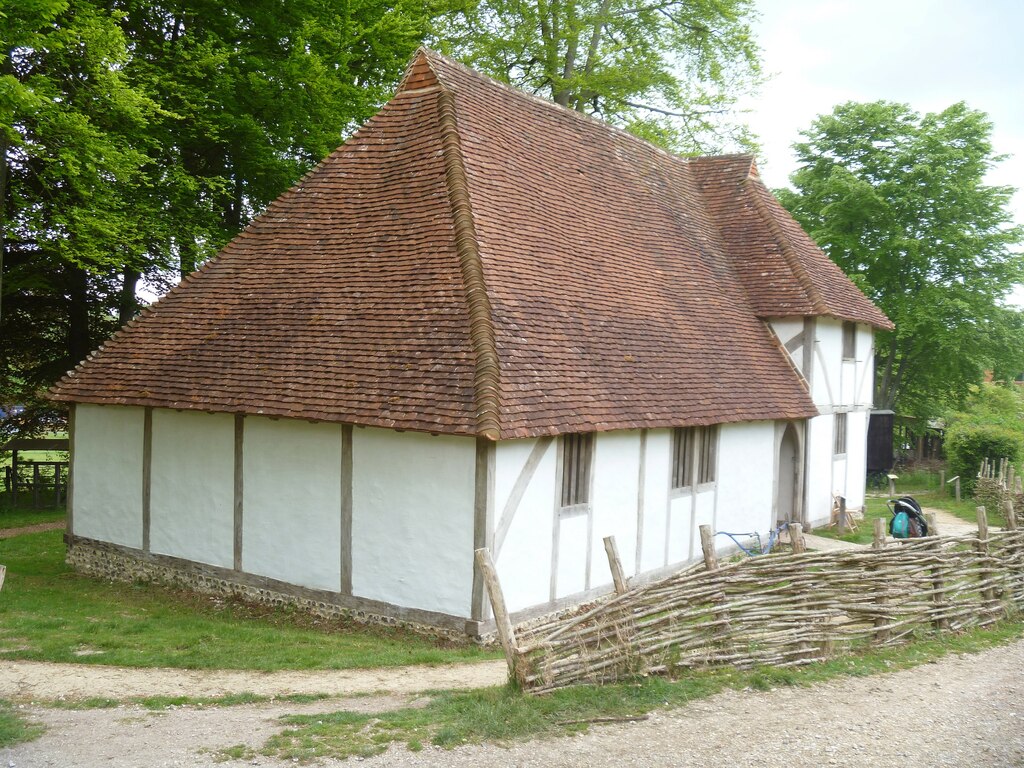
A medieval house, originally from Sole Street (Cobham), Kent, England, now at the Weald and Downland Living Museum, an open-air museum in Singleton, West Sussex, south England
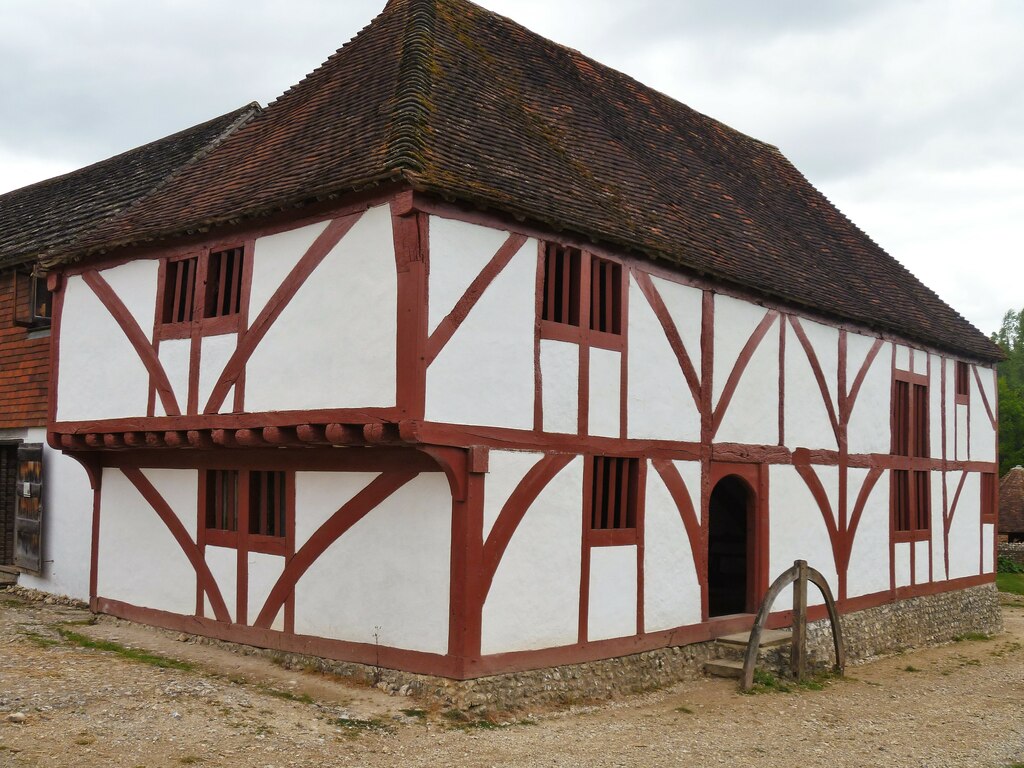
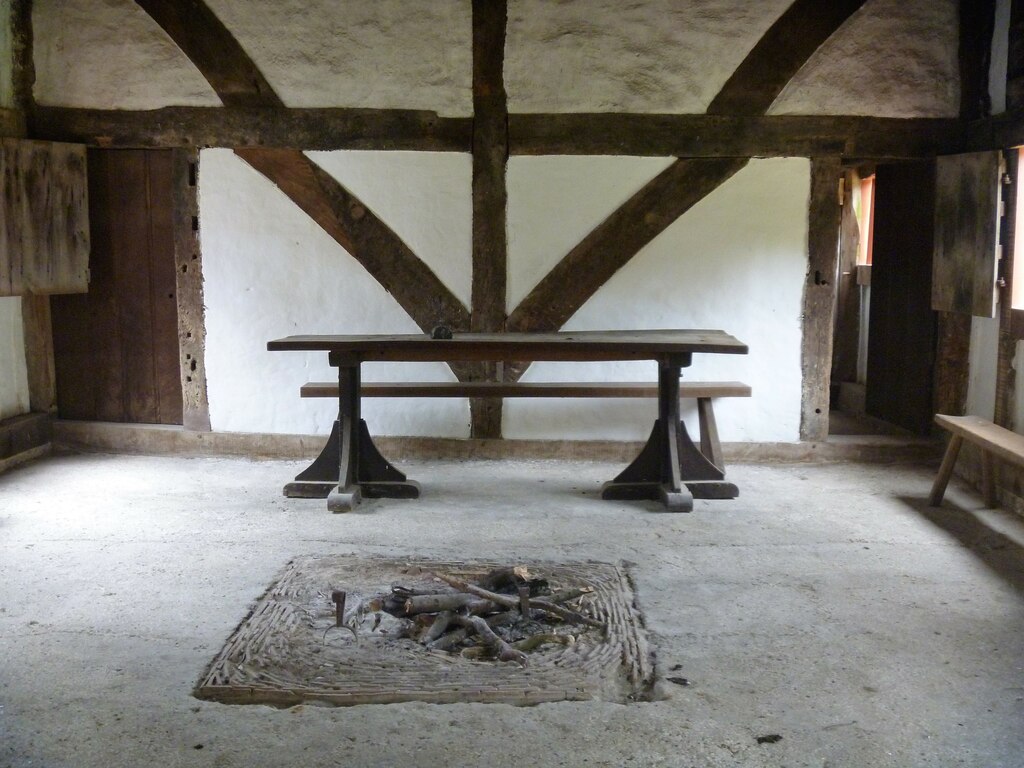
A medieval house, originally from North Cray, Kent, England, now at the Weald and Downland Living Museum, an open-air museum in Singleton, West Sussex, south England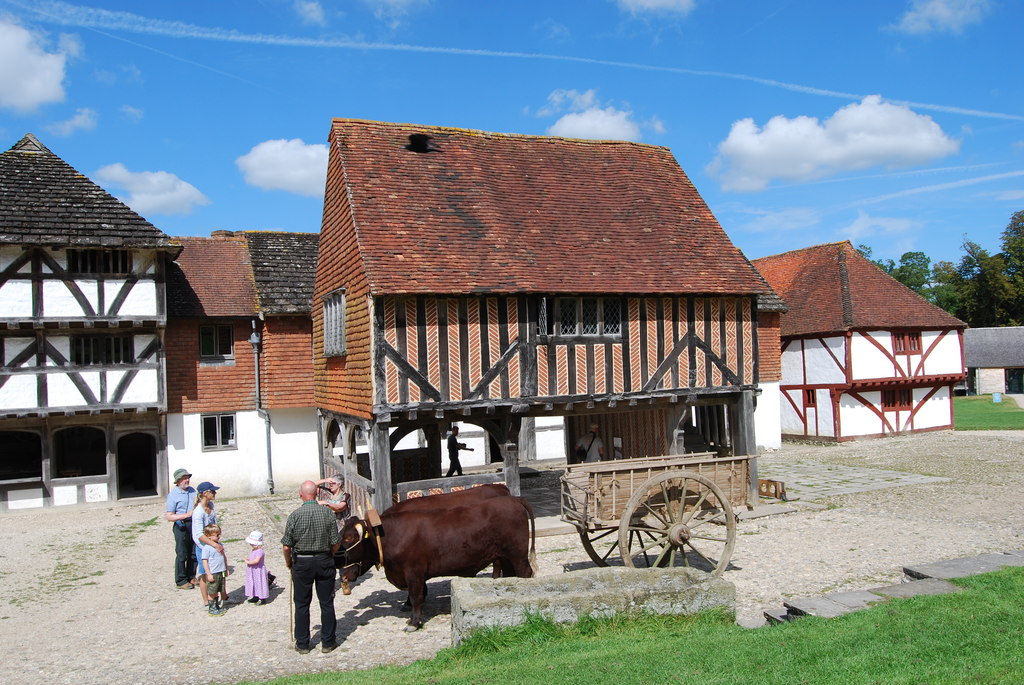
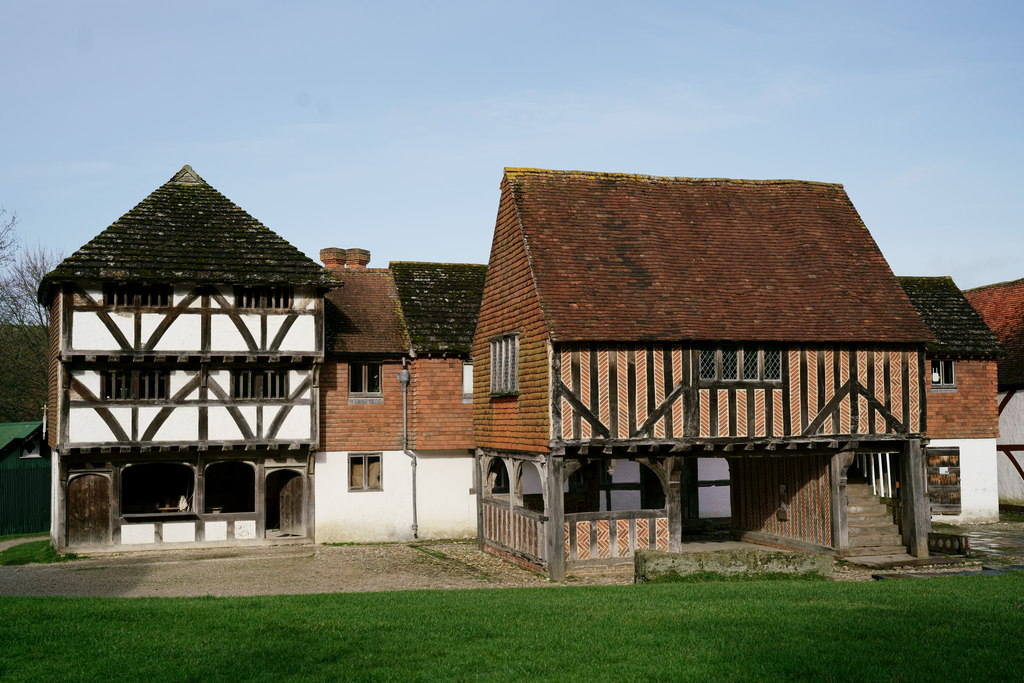
Rural market hall, originally from Titchfield, Hampshire, England, now at the Weald and Downland Living Museum, an open-air museum in Singleton, West Sussex, south England
You can read more about the individual buildings at said open-air museum here.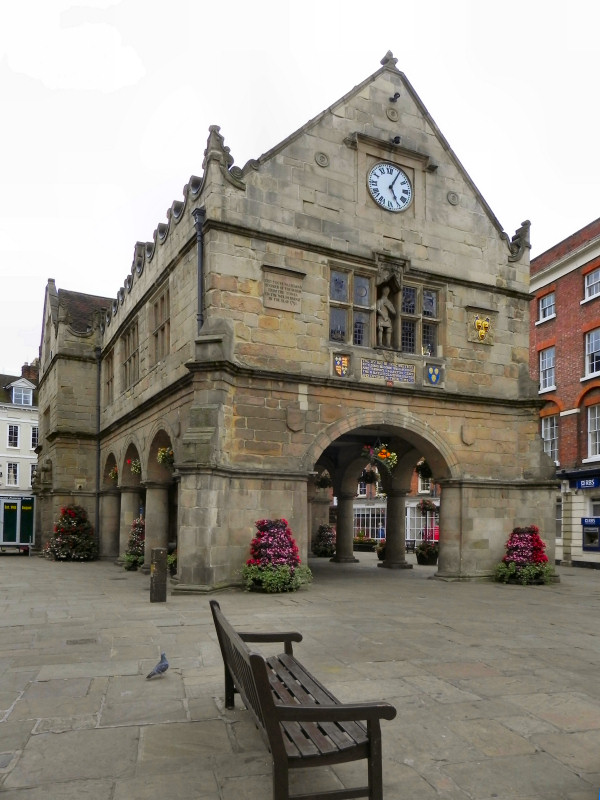
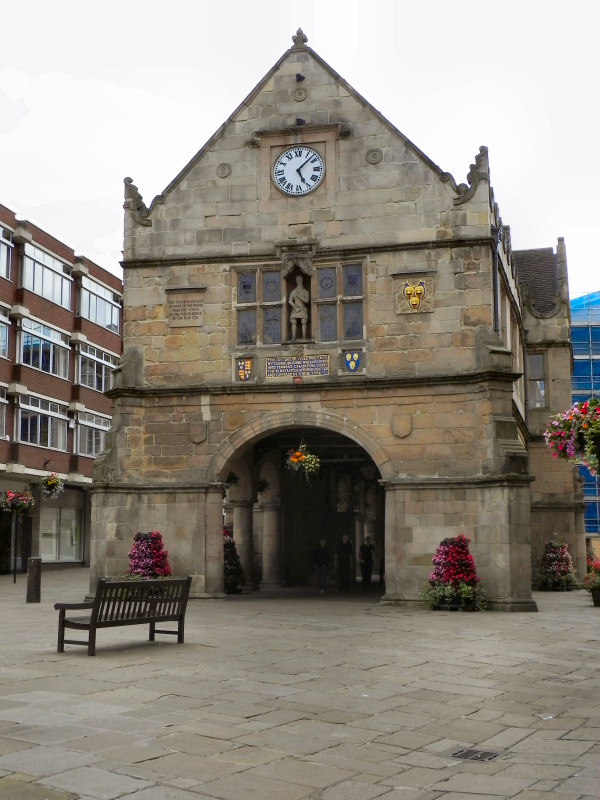
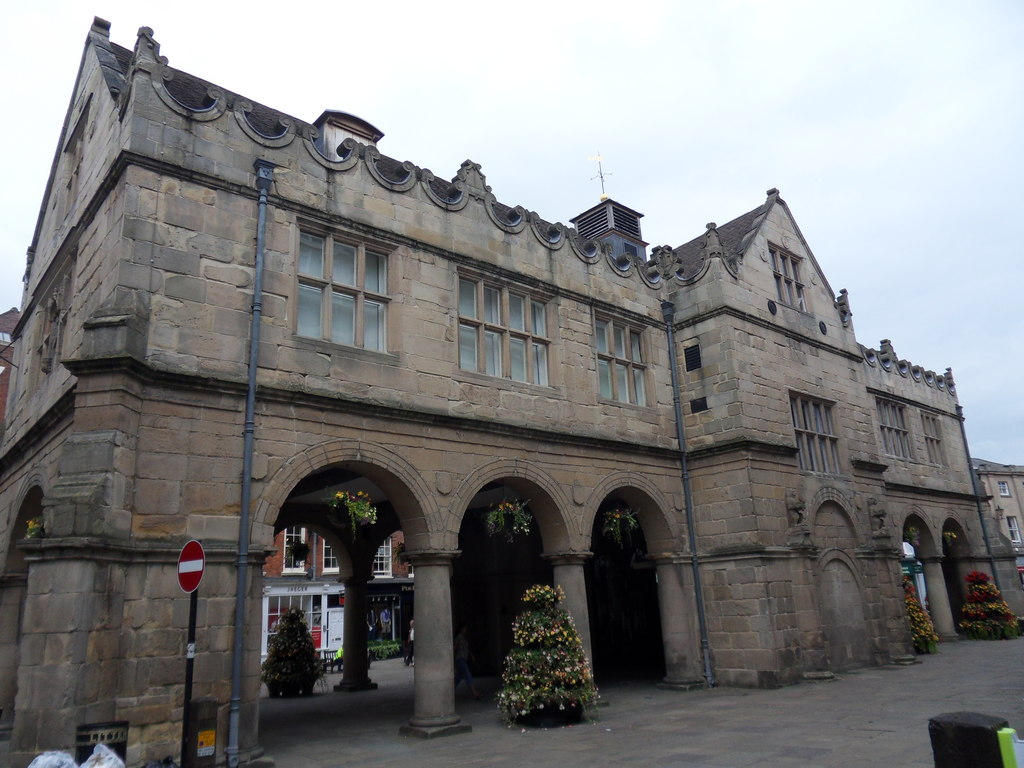
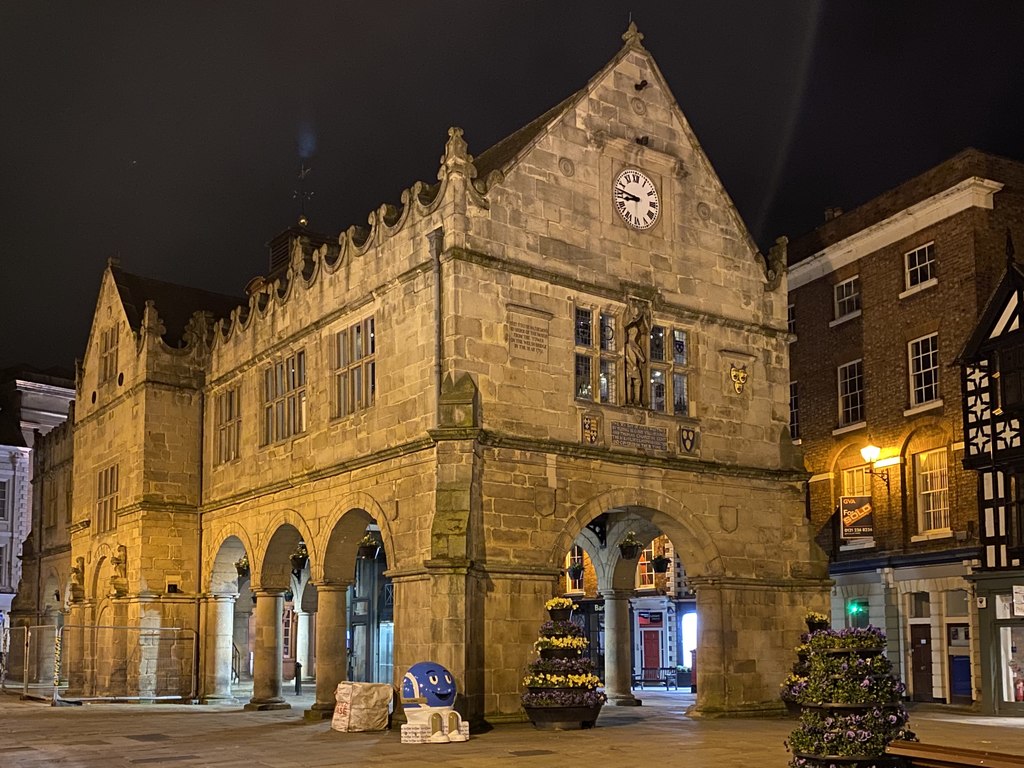
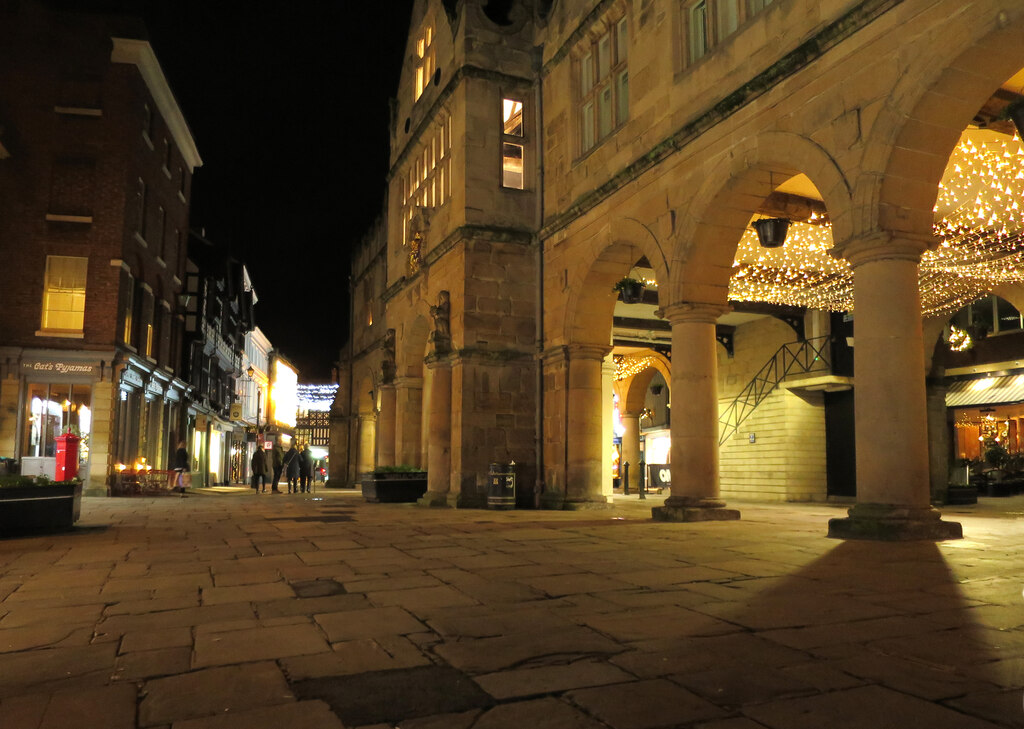
The Old Market Hall, Shrewsbury, Shropshire, England - additional photos here and here
-
 1
1
-
-
Stokesay Castle, one of the best-preserved fortified manor houses in England and the British Isles in general.
Rather than remain an original castle or castle ruin, or completely converted into a mansion, manor house, chateau, or romantic folly, this older rural castle was converted into a traditional fortified manor house in the early modern era and hadn't really changed its nature throughout the centuries. I feel this is a very good inspiration for TDM, given the style of architecture in TDM's fictional universe.


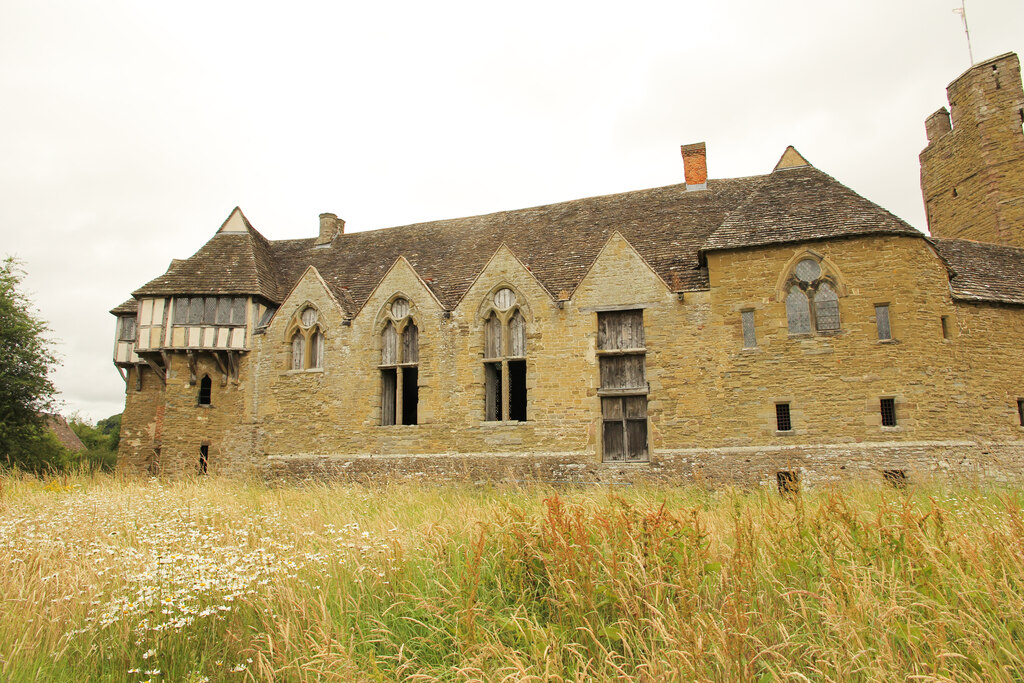
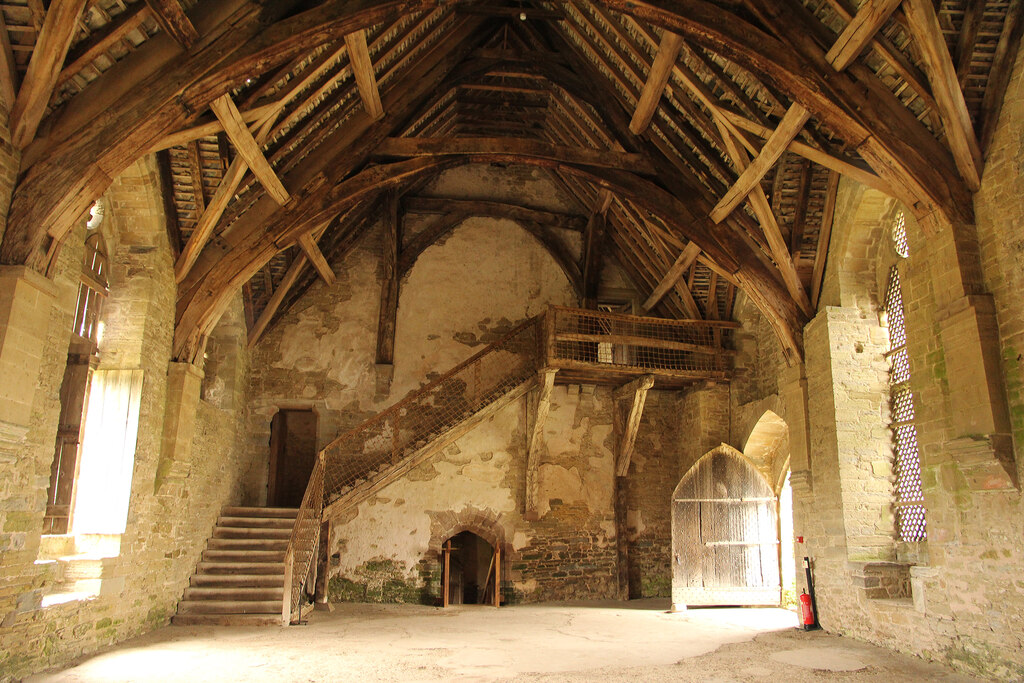
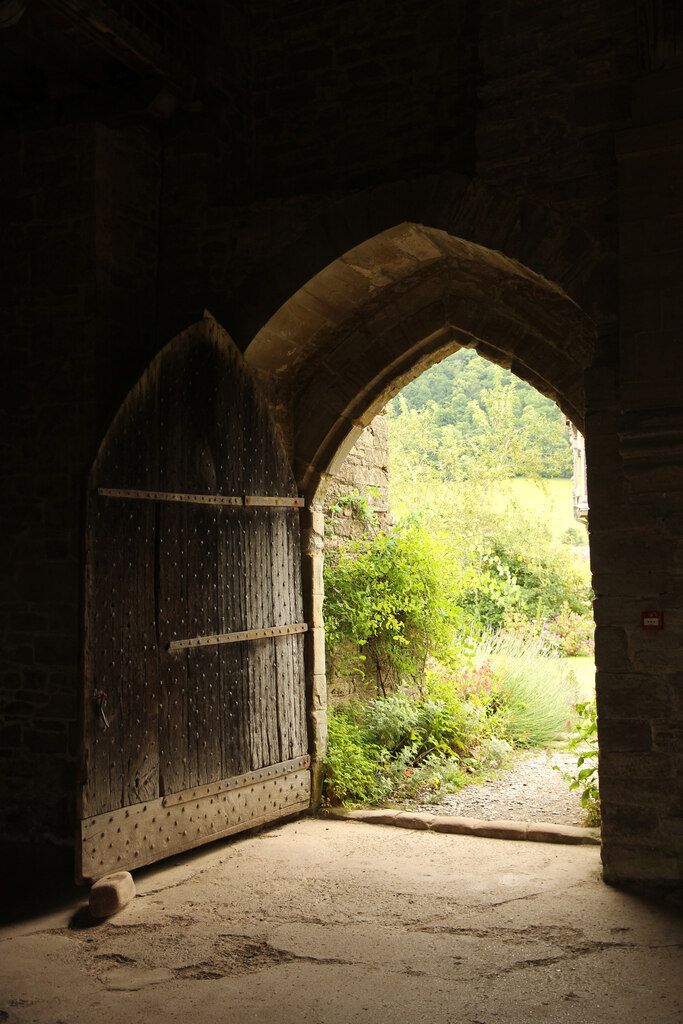
.jpg/331px-Stokesay_Castle-44_(5738185646).jpg)

https://commons.wikimedia.org/wiki/Category:Stokesay_Castle
https://commons.wikimedia.org/wiki/Category:Stokesay_Castle_(interior)
https://www.geograph.org.uk/snippet/6359
https://www.geograph.org.uk/snippet/4859Loads and loads of great photos behind these links, so don't think these are the only interesting ones I could share.
There's a huge amount of interesting details in this fortified manor house.-
 1
1
-
-
On 3/14/2022 at 3:38 AM, Gerberox said:
That's rather a toy.
A pretty deadly toy if you "catch" one of its bolts in the face or gut.


-
On 1/8/2022 at 4:11 PM, Filizitas said:
It is done. Delightfyl Demo 2!
Thank you for all your support guys.
https://filly-the-owl.itch.io/delightfyl-demo-2How Delightfyl !
 Keep up the good work, Fili.
Keep up the good work, Fili. 
-
 1
1
-
-
- Popular Post
- Popular Post
Hello, fellow TDM people.
Already a while back, @Kurshok and a few other people raised the idea that it might be useful to create something of an overview of the fictional history of The Empire and of nearby lands and regions. Personally, I didn't feel as strongly about it as them, but it was an interesting idea.After putting some thought into it and creating some preliminary notes, I plan to attempt just that. But first, I want to make some clarifications in the following FAQ.
Q: Oh no ! This will be considered canon and we'll have to be subservient to it and required to follow it, right ?
A: It will not be considered canon, because The Dark Mod de facto has no 100 % canon. Aside from the things established by the game in its first years (see the "universe" wiki articles) and things established in the official missions, virtually everything about the setting beyond that is semi-canonical.Q: So, our new FMs will not have to adhere to the timeline absolutely ? What if they contradict something in it ?
A: Of course they won't have to. There are already a fair few missions that are vague about their location, or don't even take place in The Empire. No one's expected to follow some semi-canonical compilation of history and "lore" to the letter, nor should they. As the title of the thread states, this'll be more of a vague guideline. The sole reason I'm bothering with this project at all is to address the occassional complaints that "the sheer number of FMs could create big inconsistencies in TDM". You want slightly more consistency ? You want more guidelines ? Okay.Q: What about the details of the timeline ? Please don't overdo it with extrapolations of existing TDM setting elements.
A: The timeline and ancilliary stuff will be written in a manner which provides a basic idea about the world of TDM, particularly history and setting elements seen in The Empire, and some of the more "civilised" states and cultures that border The Empire on land and overseas. Extrapolations will not be overdone, in part because TDM already has pretty good and consistent writing in its FM (for the most part) and good and consistent adherence to the setting's tone, and in part because I don't want this mini-project veering off into implausible fanfiction. As a simple example, when covering any paragraphs about the "present day" technology of The Empire, things like extremely rare experimental airships might get a brief mention (to acknowledge the single airship appearing in the FM Pandora's Box). On the other hand, we don't know much about the existence of guns in the setting, so I intend to treat them as an existing technology that's not gone much beyond maybe a 15th century to very early 16th century timeframe (i.e. they have fairly capable early artillery in the world of TDM, but gunpowder hasn't become crucial yet, and there isn't much variety or user-friendliness in handheld firearms, so forget about wheellocks or flintlocks or all forms of pistols). And that's just the technology. There's plenty of other areas where you can fill in some unclear gaps, but subtly, rather than completely wild extrapolating to the point of absurdity. TDM is a subtle stealth game in a technologically more archaic setting, with a subtle presentation, so any and all extrapolation should be subtle as well.
Q: Anything else ?
A: There will be an in-universe excuse for the semi-canonical nature of the whole thing. The timeline and claims of various literature about history will not always be consistent, as lack of more accurate records, and the interpretations and biases of the authors will play a role. So, you will not be getting a "The Absolutely True Unabridged History of The Empire" and you shouldn't even expect to receive one. What you will see instead is a broad interpretation of the history of The Empire, the Known World, the Faith of the Builder, etc. Concerning the Faith of the Builder, many of the earliest bits of information will be almost semi-mythical, though a better term would be "legendary" in the original sense of the word. Legends of the lives of the saints, and so on, with the interpretation of details provided in such stories or historical accounts being up to the reader. Maybe some supernatural events were only a tradition and didn't happen, maybe they did, maybe no one knows for sure after so many centuries, etc. Pondering this is intentionally all the more complicated, given that TDM takes place in a world where some magic and some obviously supernatural things demonstrably happen from time to time. If I include any writing by either various strands of the Church or by pagan-sympathizes/apologists, this will portray disparate views on a variety of topics, including religion, interpretation of historical events and historical personalities, etc. Expect that biases will be clear here, with any of the sides often attempting to lionize and whitewash their cause or preferred stuff, while denigrating or even demonizing others. Some of the earlier histories will also reflect rulers who were less educated, but had educated individuals write the histories of their particular period: "History is written by the victors... unless they're actually illiterate !"
Q: Is feedback to this little project welcomed ?
A: Not only welcomed, I even actively seek feedback from you fine people and outright ask for it nicely ! Granted, different people will have different ideas of what to include or not, where to draw the line on something being vague and mysterious and something relatively well understood, but all in all, I think reasonable compromises might be found in debate. Just keep things level-headed and remember the scope and atmosphere of the setting (lest we stray too far from it).
Q: Besides feedback, do you need help with anything else ?
A: I certainly do. What's arguably even more important is helping out gathering some of the written materials from existing FMs. Materials that might pertain to the history of the setting, whether it be the local history of some village, town, city or other settlement (fortifications and monasteries are also welcome), or some regional history of a particular geographic area, or the general history of The Empire and of the Builder Church, or even foreign and faraway lands. Things like the history of science and research in the setting and so on is also interesting information you could source from FM readables. I will try to gradually contact various FM authors and ask them about any details that are unclear from the readables of their FMs. I'll also inquire whether they're okay with their FMs being considered at least semi-canonical, for the purposes of the timeline. However, if any FM authors or someone who knows their missions in-and-out decide to show up in this thread and correct the information or claims listed here, or add to them with some out-of-game notes cut from the FM, that would be splendid too. I want the timeline, especially of the more recent history of The Empire, to be fairly consistent with any dates and events that occur in FMs that might be of note. Please bear in mind: Individual stories and twists from FMs that are unlikely to ever become public will not be listed in these overviews. Most things experienced by Corbin, Thomas Porter, William Steele et al will always be known to few and never recorded in the chronicles, literature and news of The Empire.
Wish me luck and feel free to contribute at your own pace.-
 6
6
-
On 5/1/2021 at 8:48 PM, Gerberox said:
Working pistols. 18th or 19th century ones. They would fit many stories better than bows. Maybe only for NPCs, maybe for the player, too.
Why would you need a pistol, if skilled FM makers or the dev team could add something like this ?
Perfectly realistic from a historical standpoint, fast to reload, but not too powerful or with too great a range. If anything, these would be faster to reload and shoot than an 18th or 19th century pistol.
-
I have a better quality mic these days, but I still need to acquire some sort of shroud for it, just in case. Currently not recording any sound effects nor voiceovers.
-
 2
2
-
-
On 8/19/2021 at 8:07 AM, Filizitas said:
I thought about this arrow too, it would certainly need to have some good logic behind it.
I would more think of it as an EMP arrow for small lamps and to temporally disable robots!Precisely. The tricky thing is how to justify it technologically, from an in-universe perspective.
We don't need to overthink it, of course, but TDM has a very grounded setting in many aspects. I think one of the best ways to "explain away" the existence of electric arrows in TDM would be to have an arrowhead that includes some conductive material on the inside and some sort of made-up gobbledygook alchemical substance that would act as a trigger to the conductive material. Once the arrow arrives at its target, the alchemical substance in one of its compartments is triggered and the substance itself then acts as a trigger for the conductive material in the arrowhead, creating an electric discharge of some sort.
Maybe electric arrows would be easier to implement in the setting of your Delightfyl game project. It seems a fair bit more modern technology-wise, especially when it comes to harnessing electricity and various electrical devices and electrical appliances. Not impossible in the TDM setting, but your own setting seems even better-suited to that, including something as advanced as EMP arrowheads.

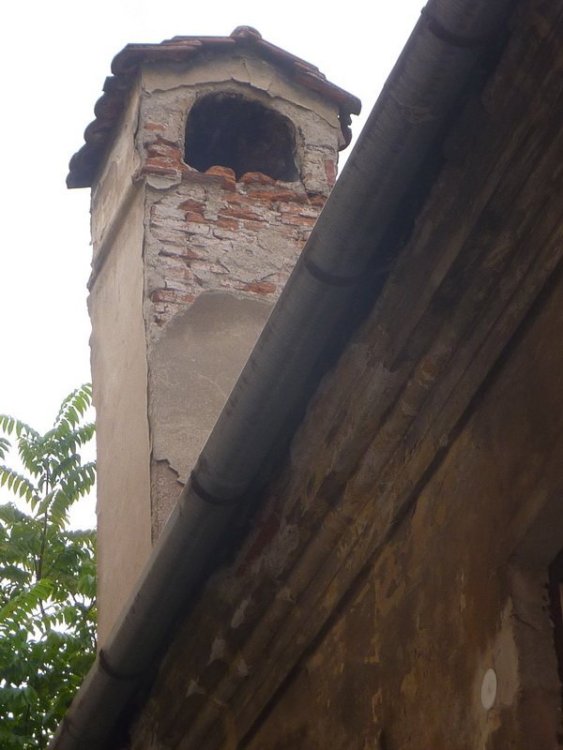
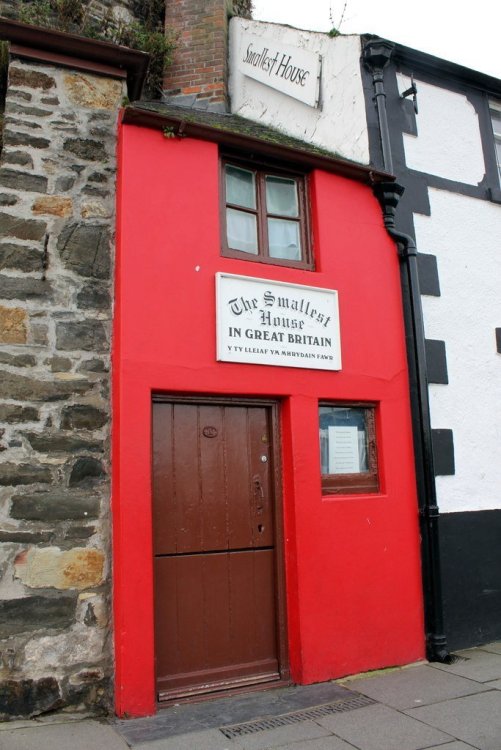
Miscellaneous ambient and background music for TDM
in Music & SFX
Posted
I've added new royalty-free music to my main post.